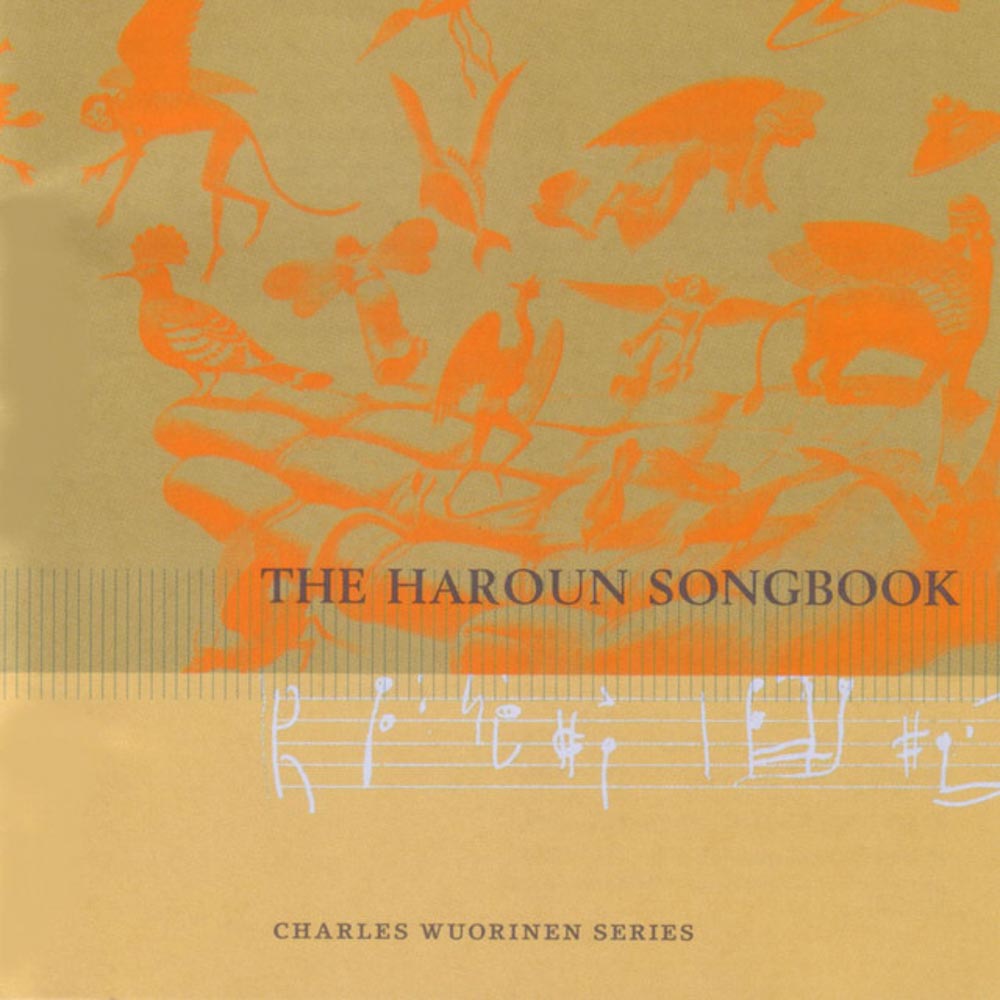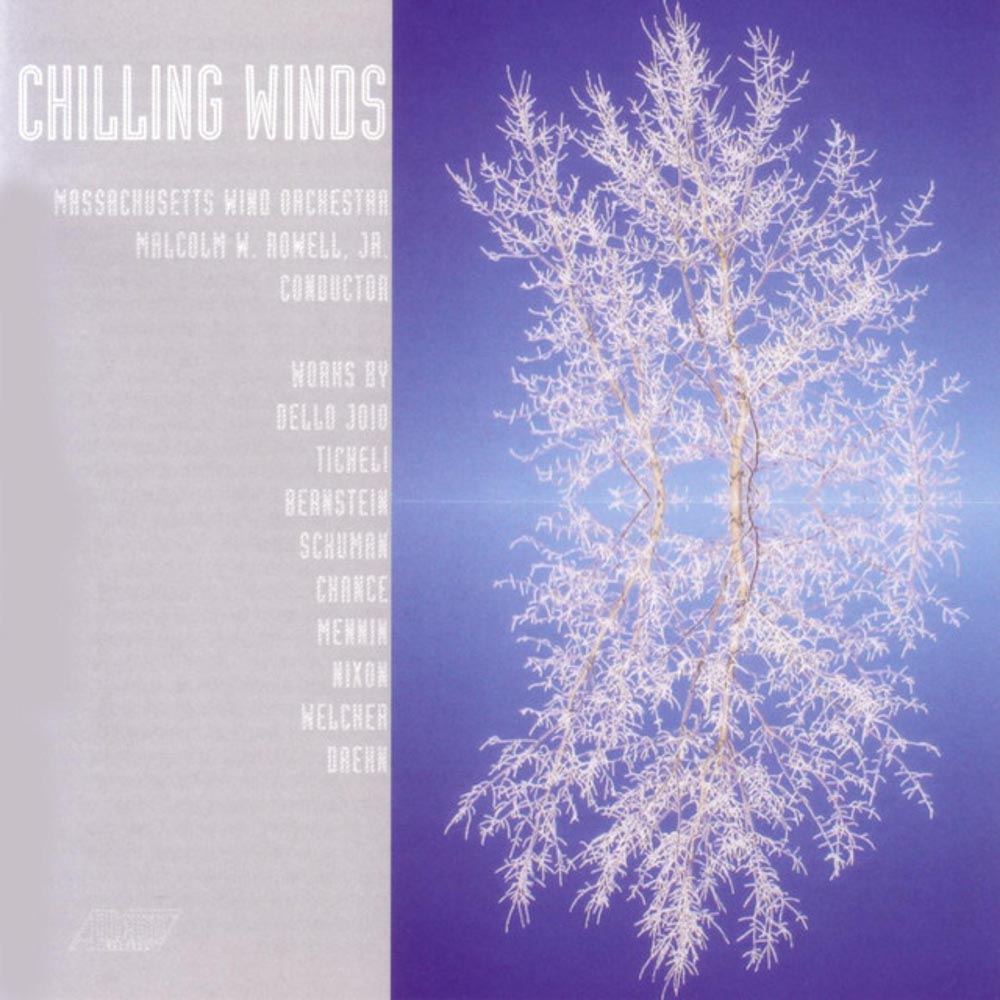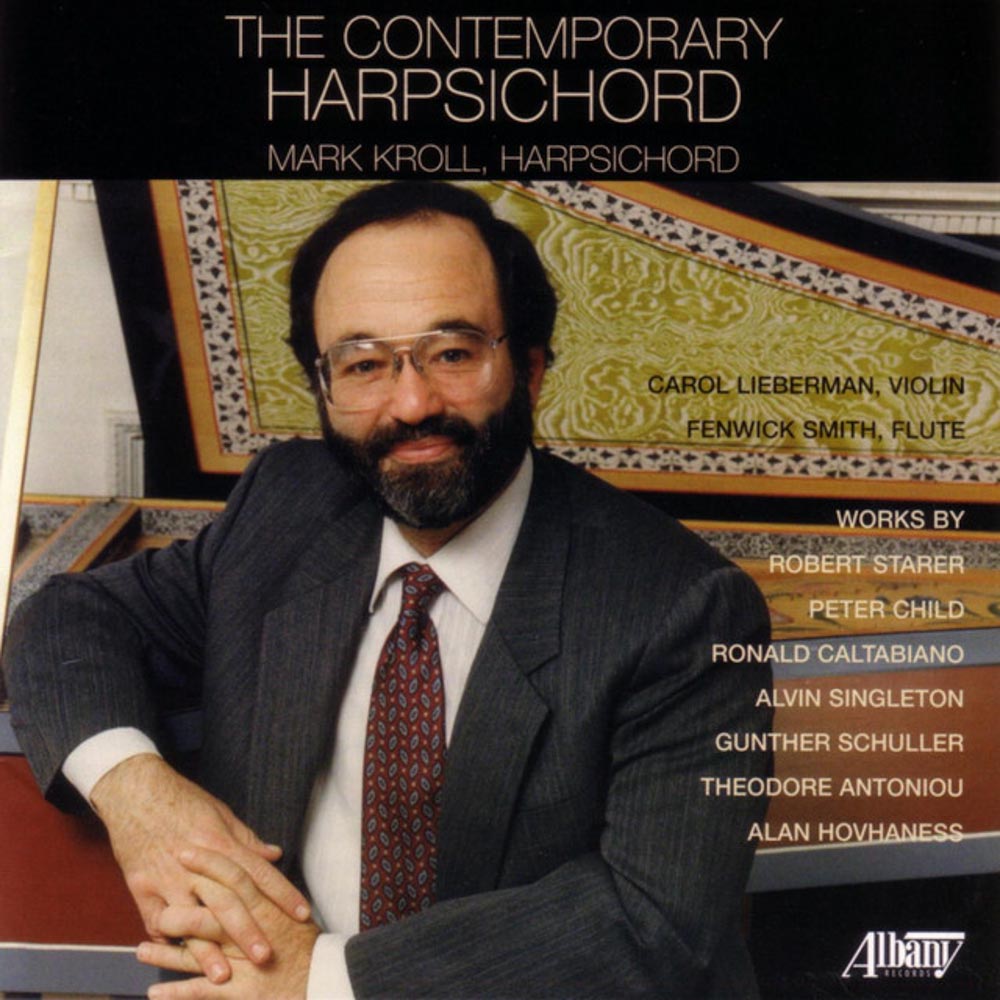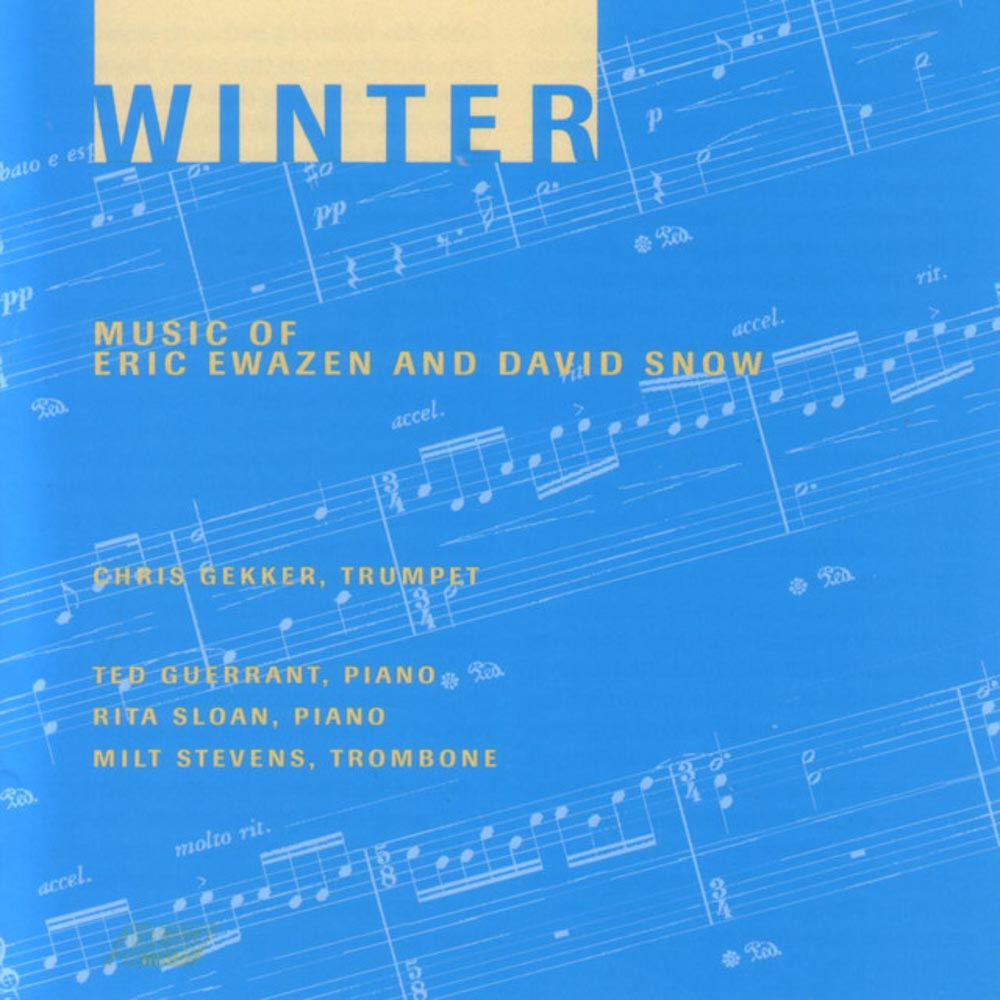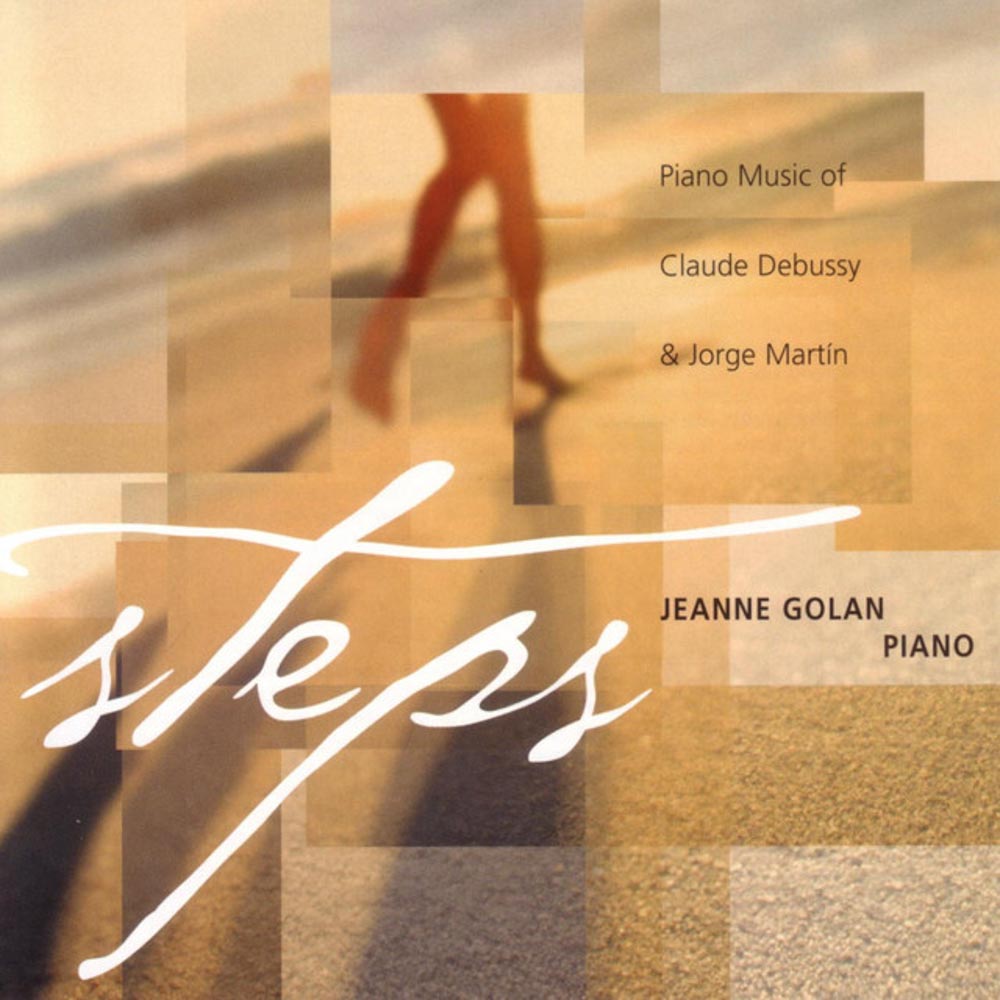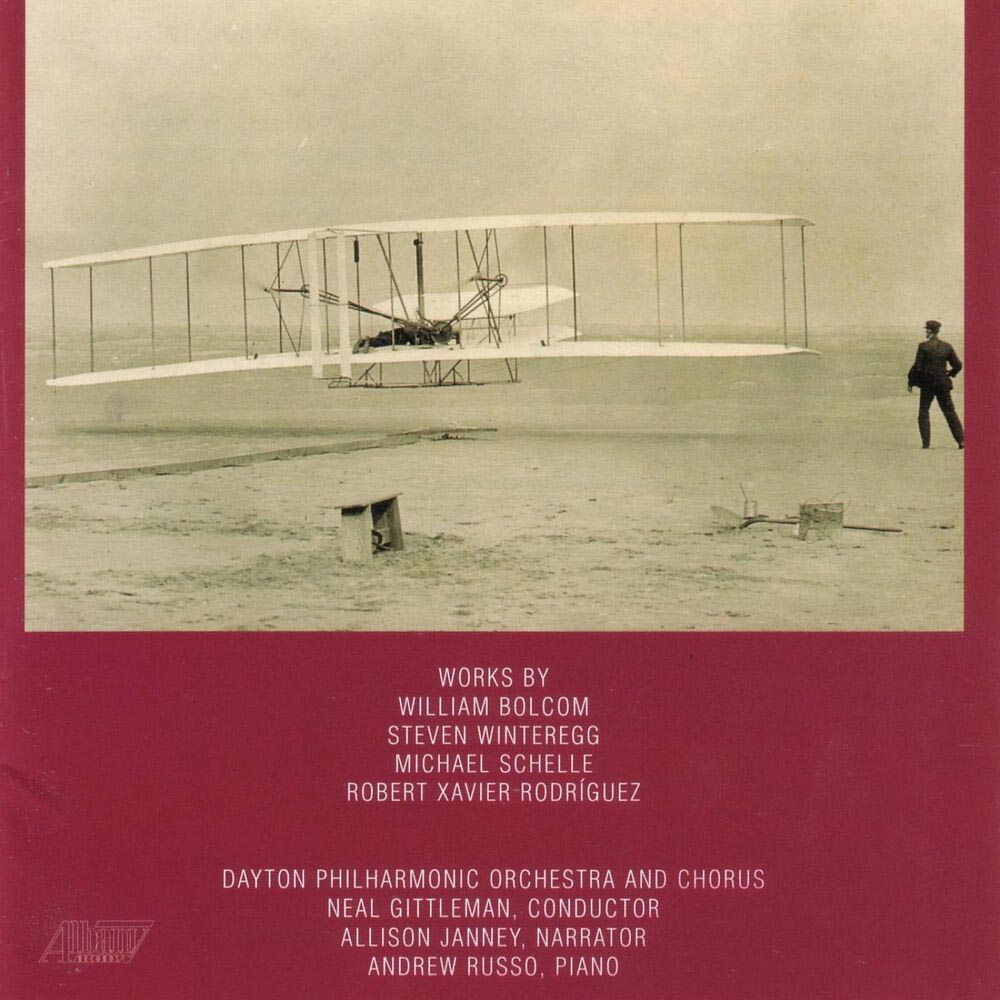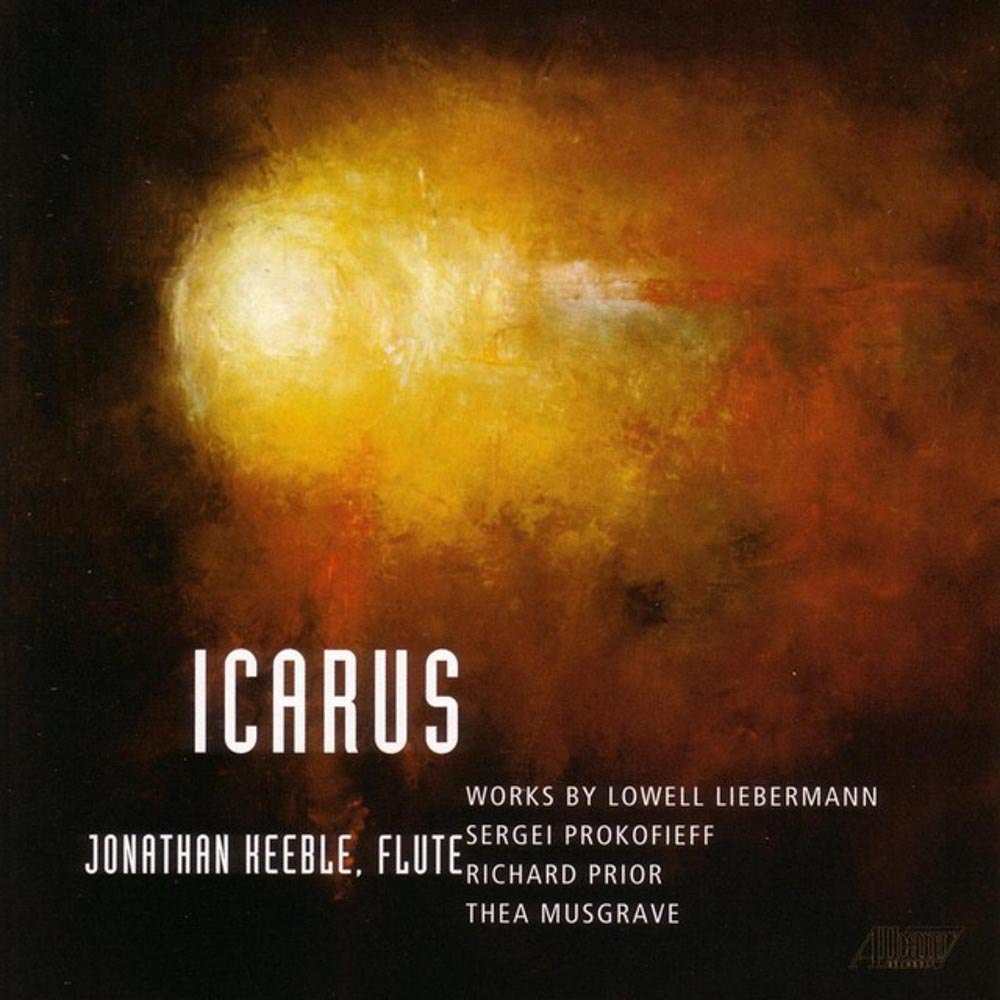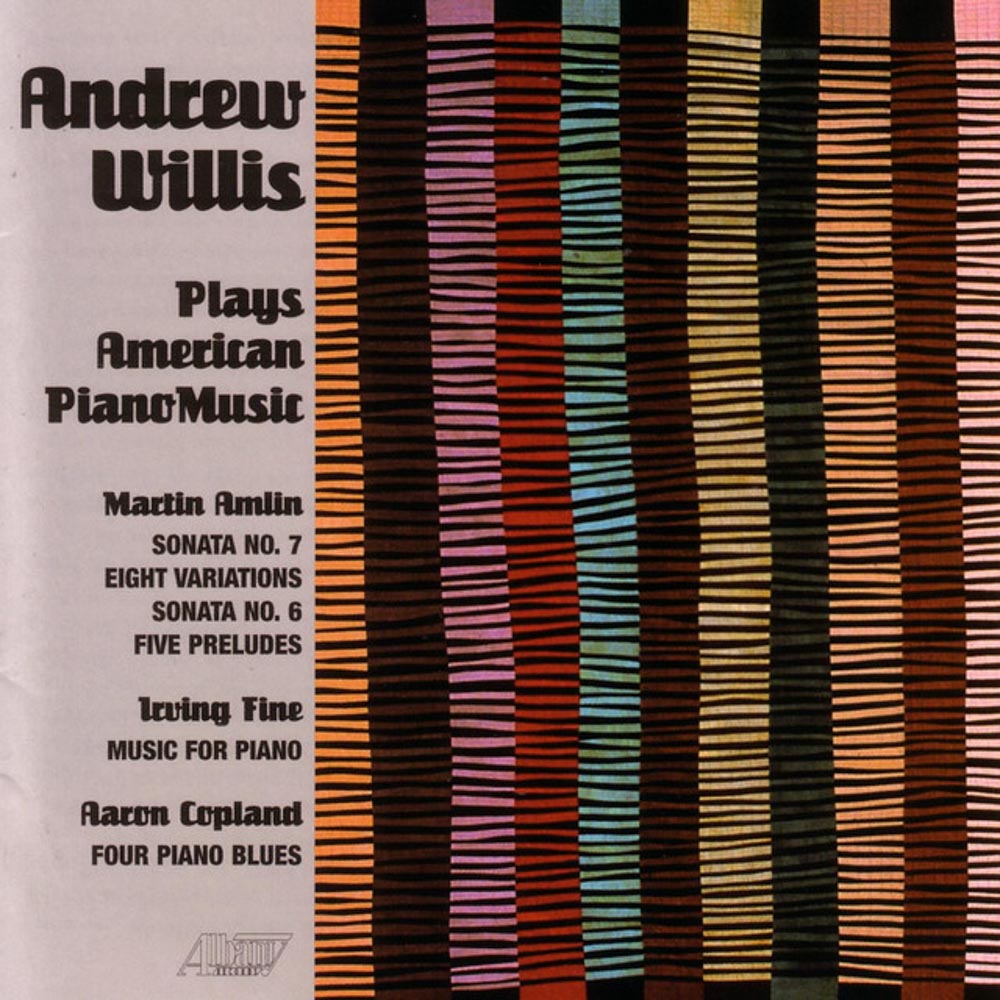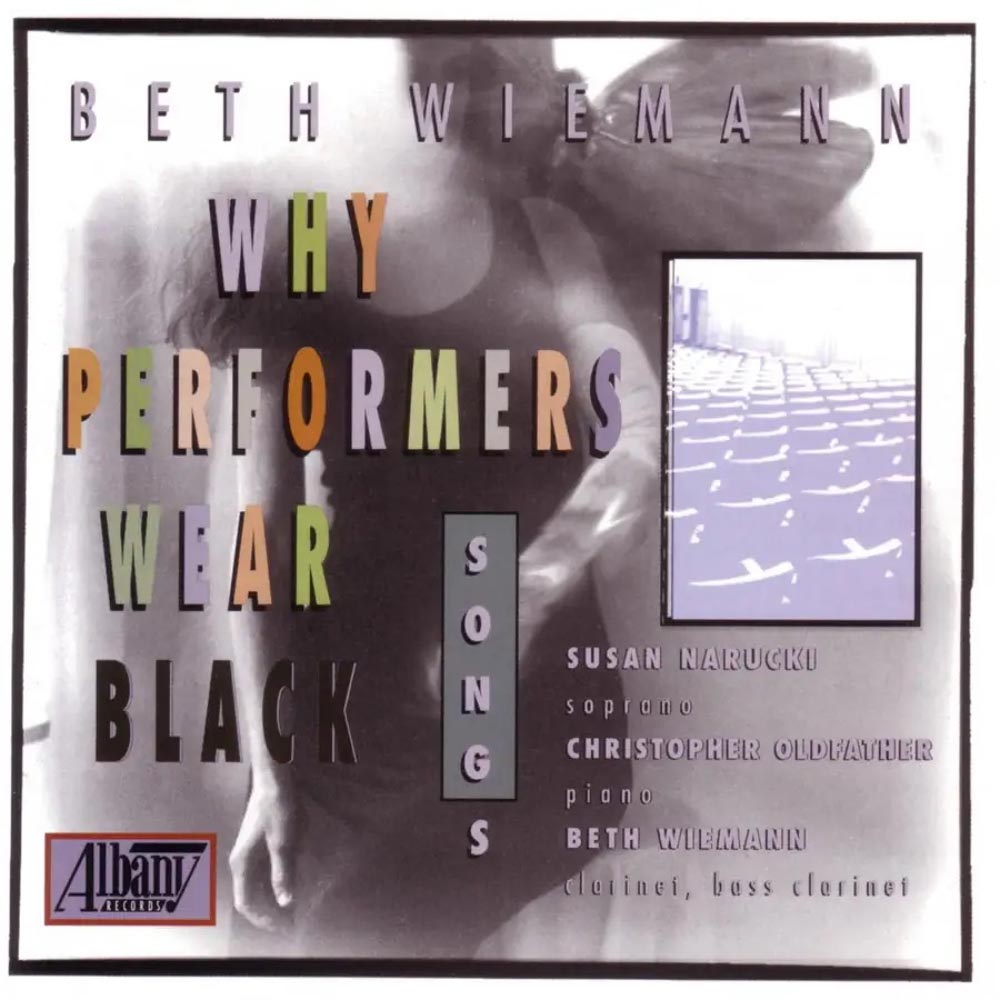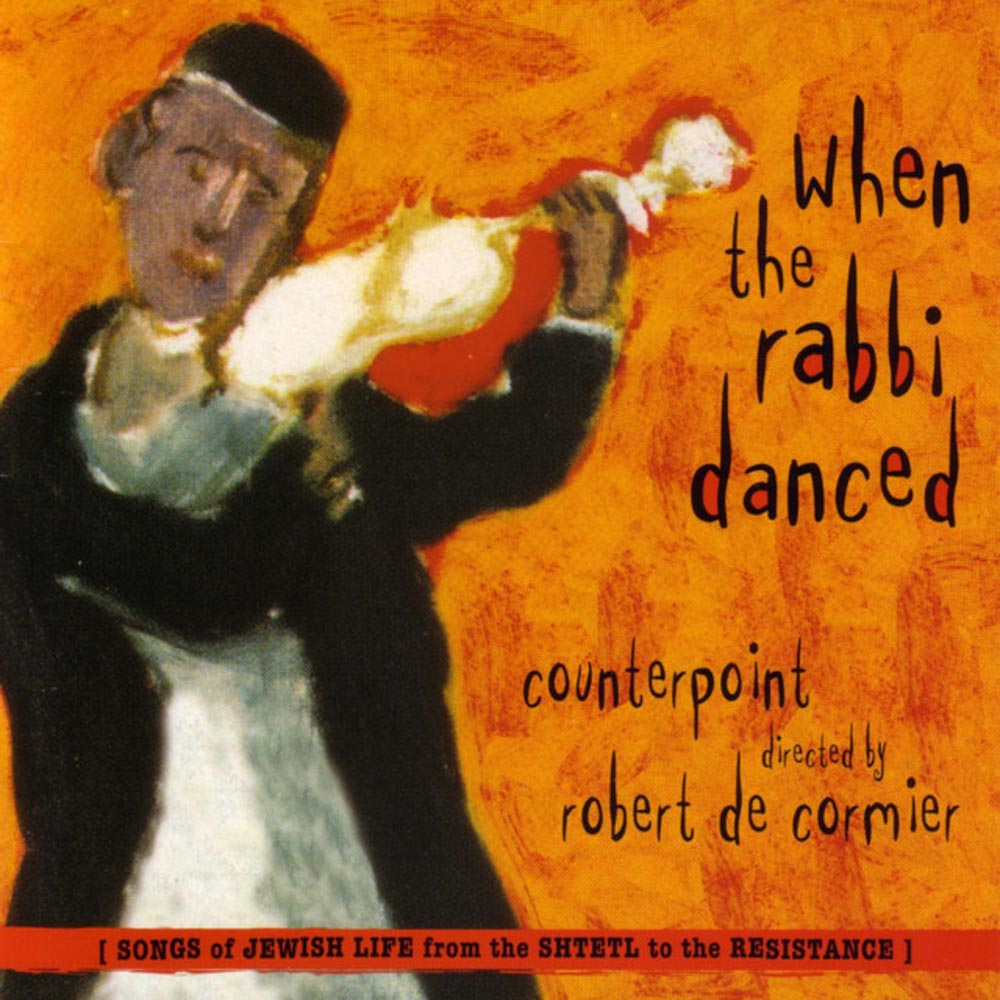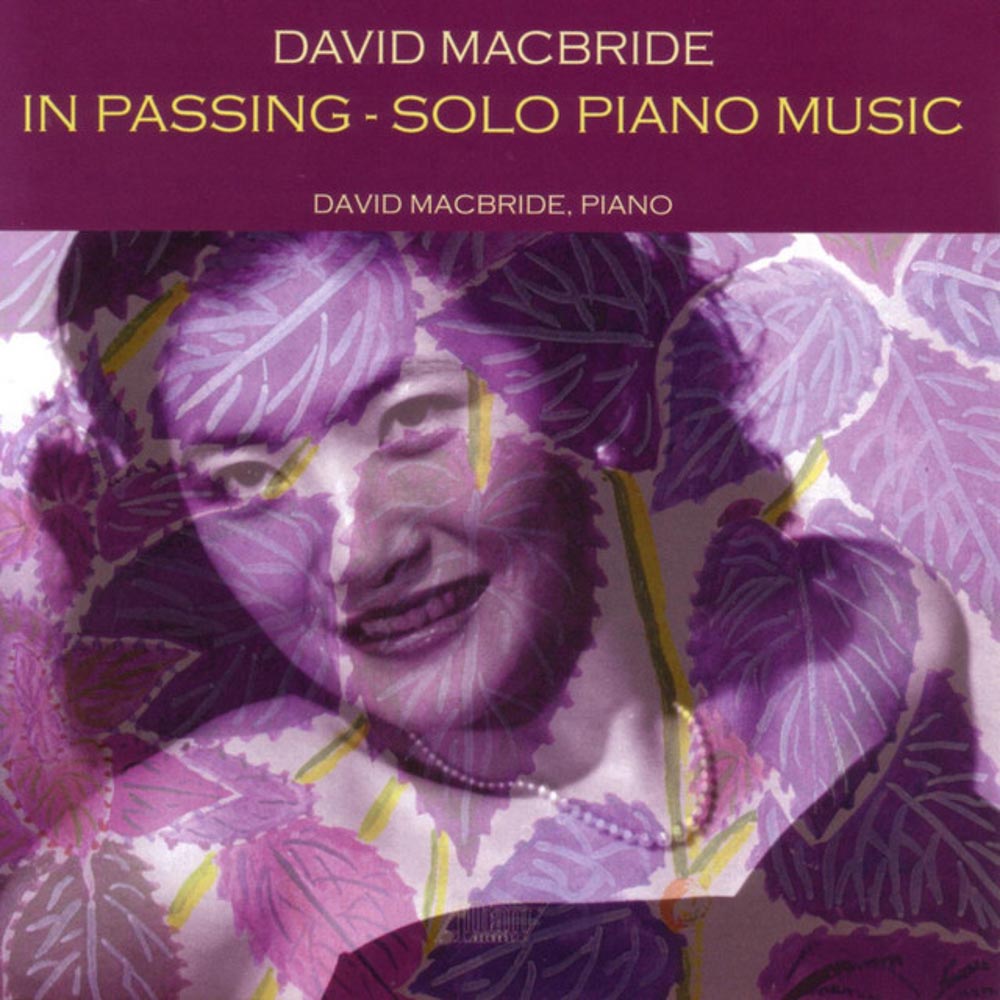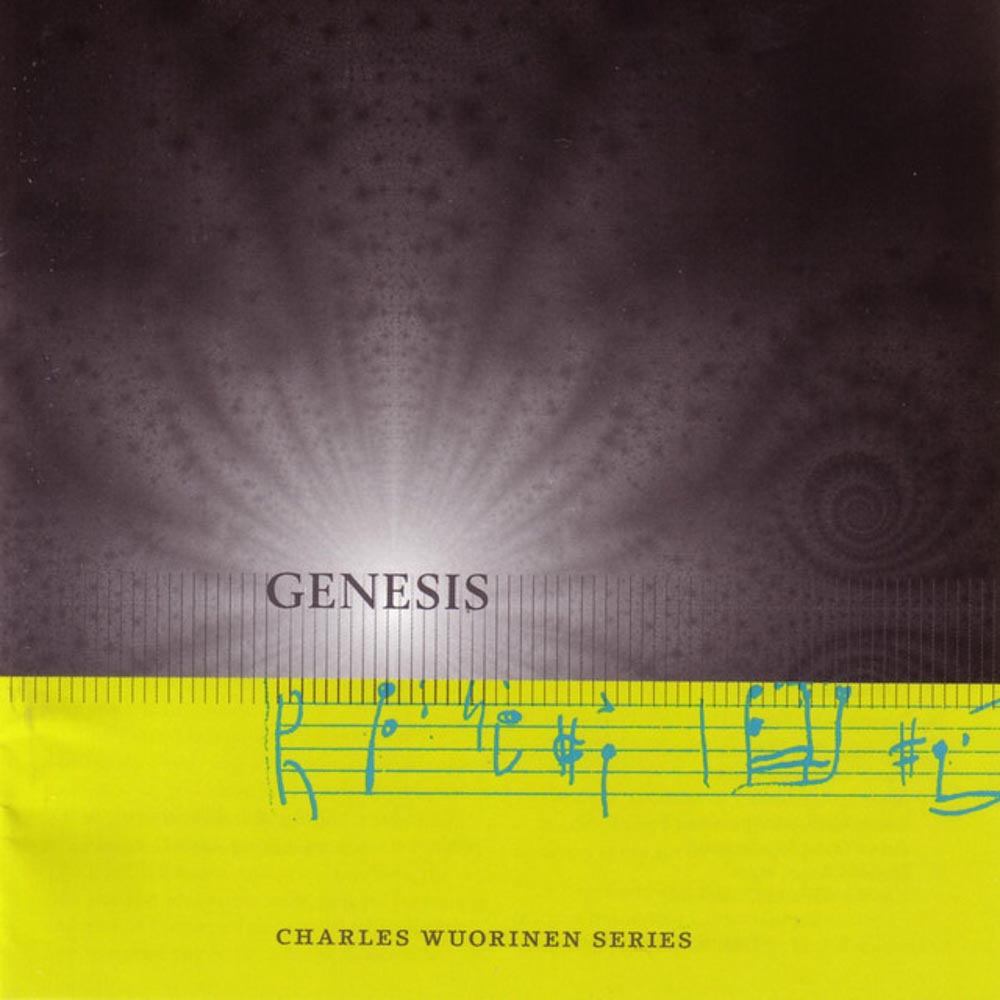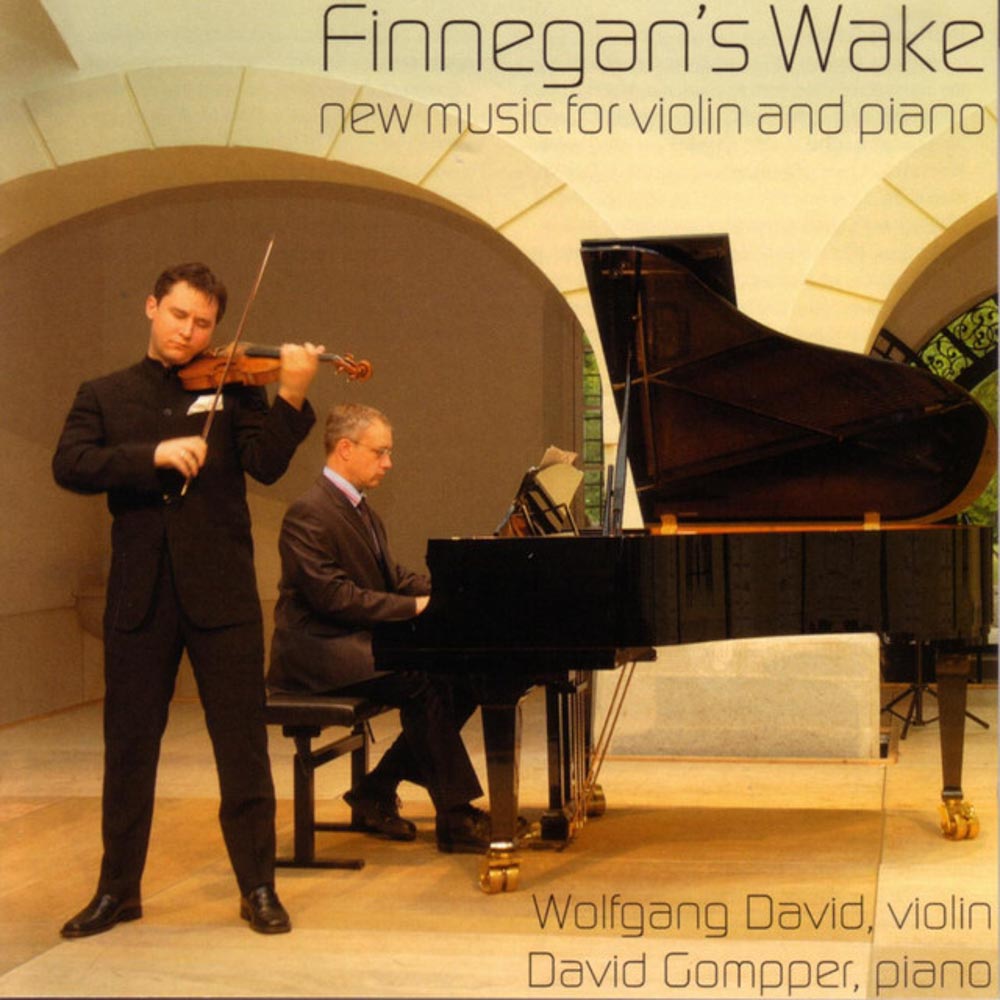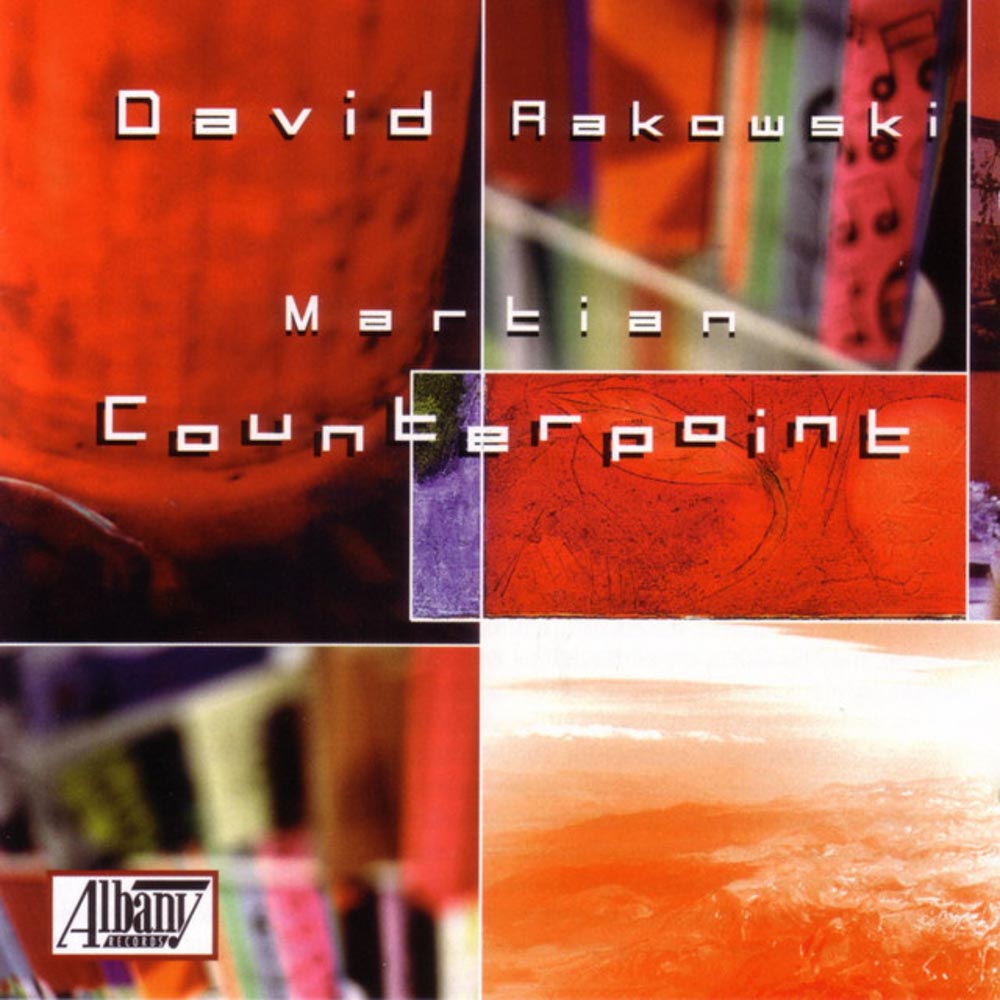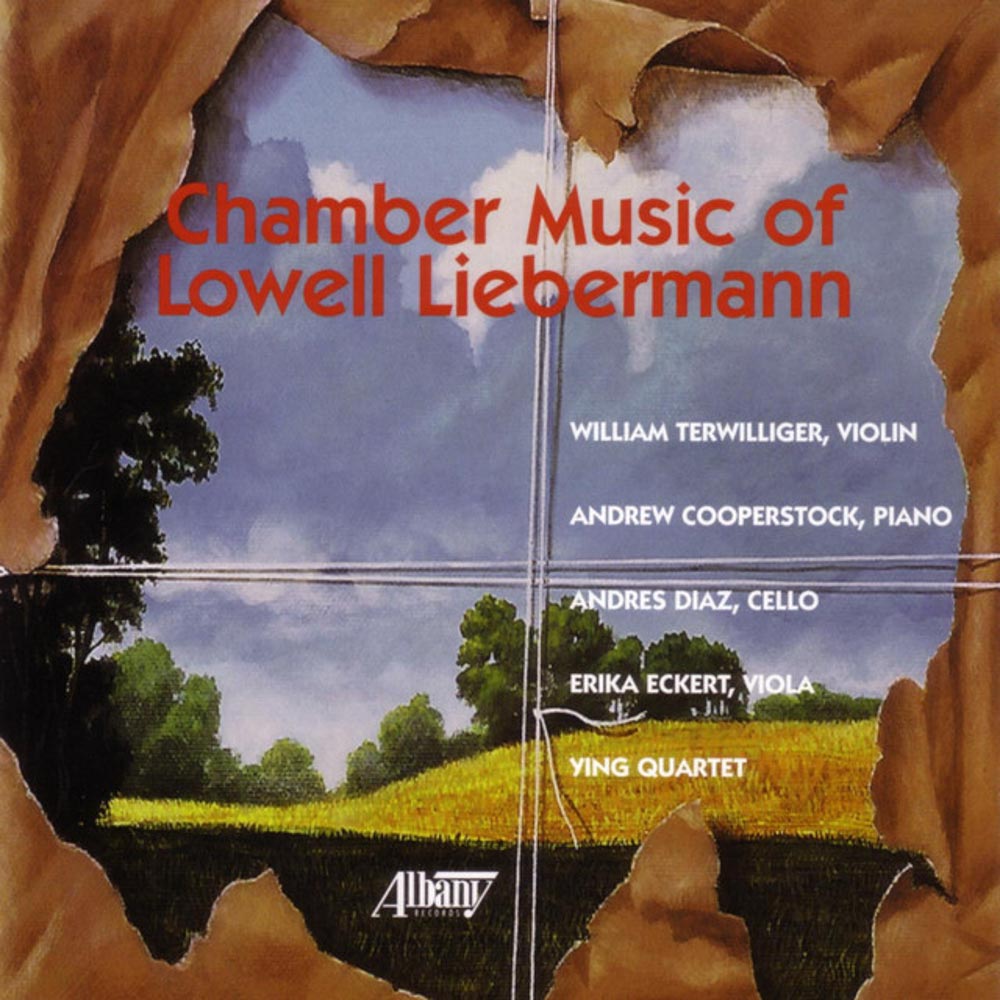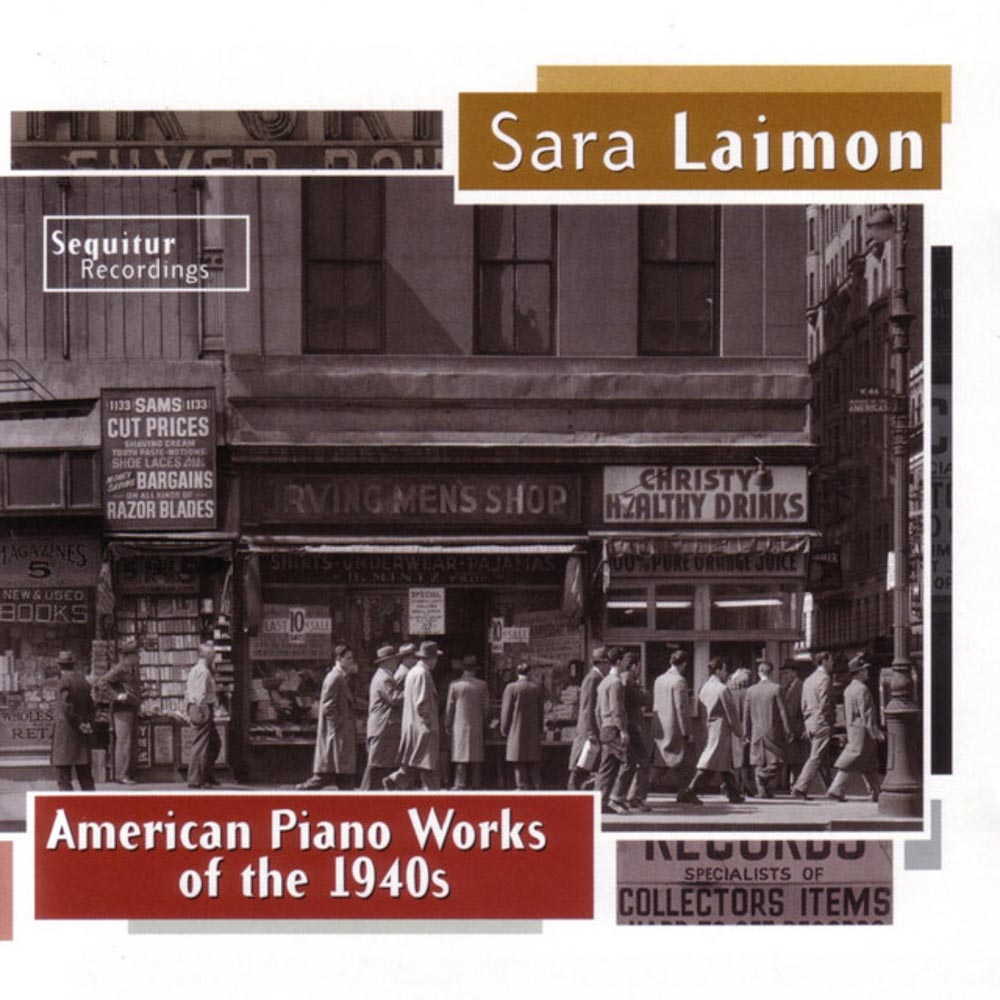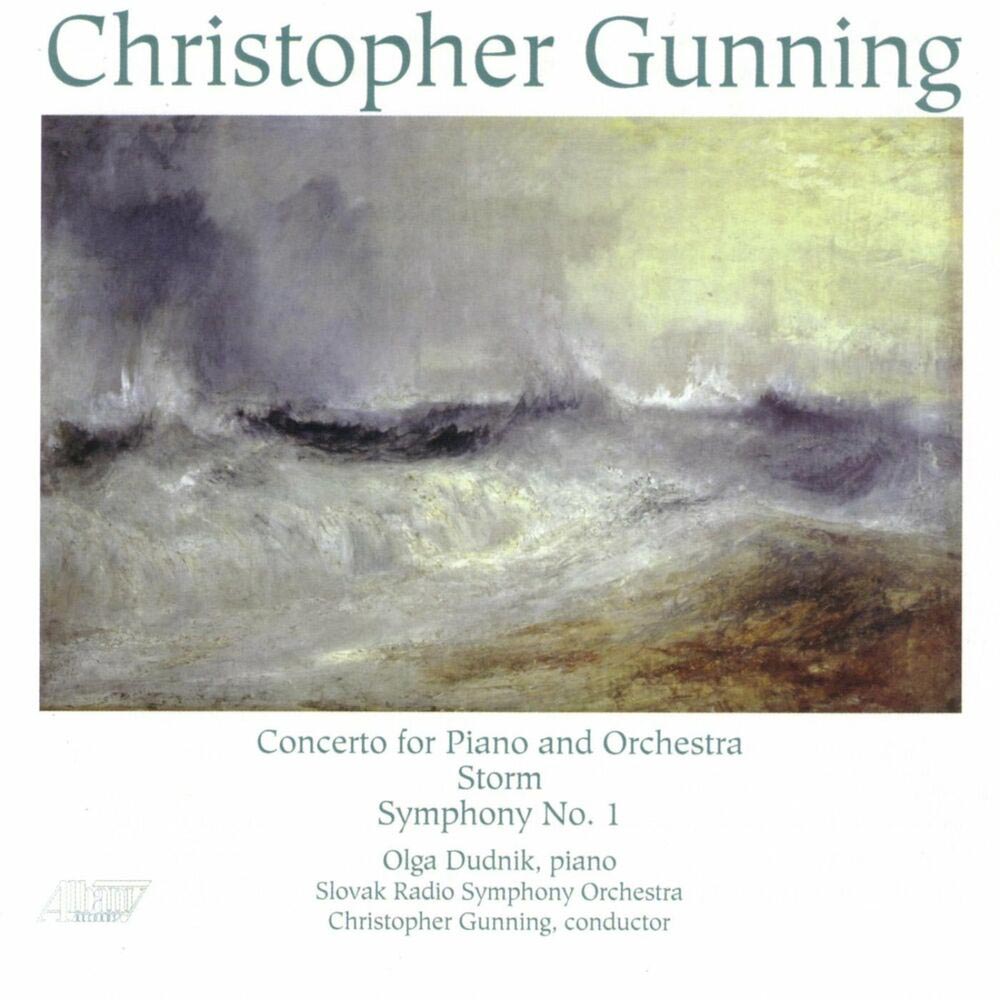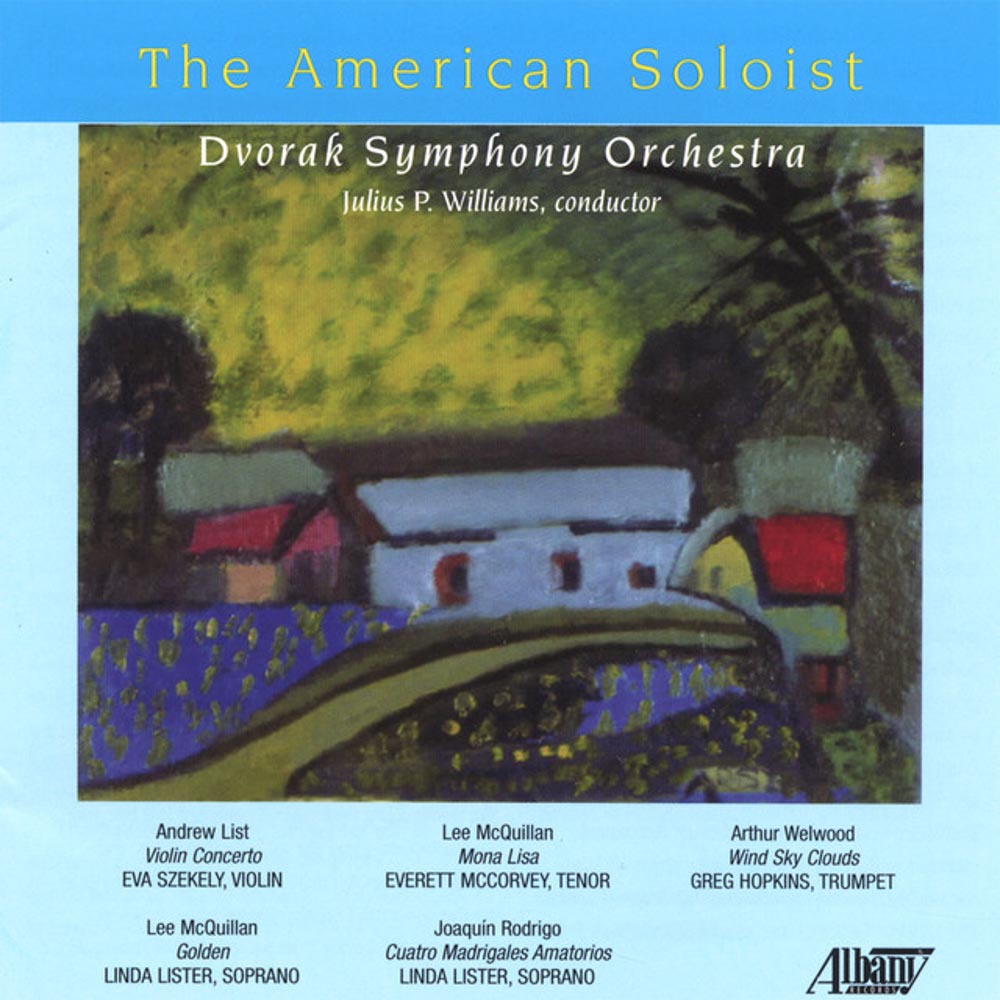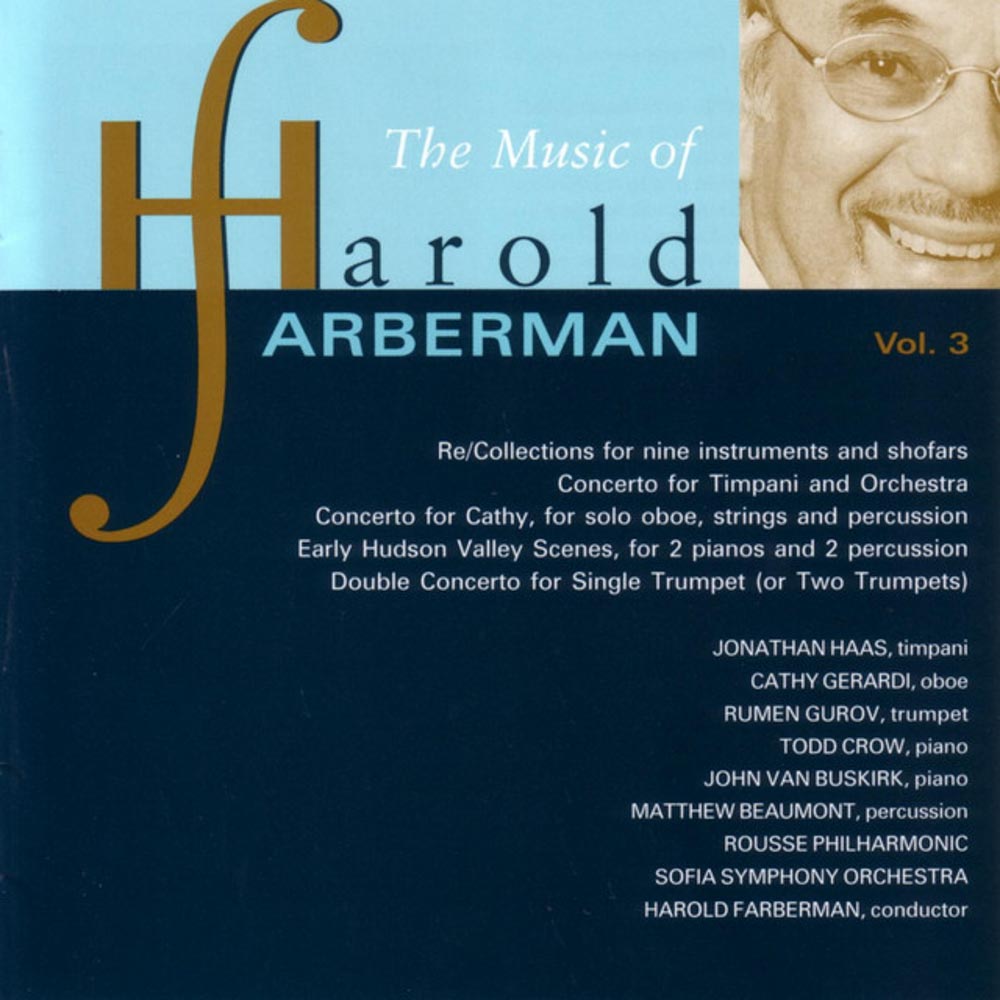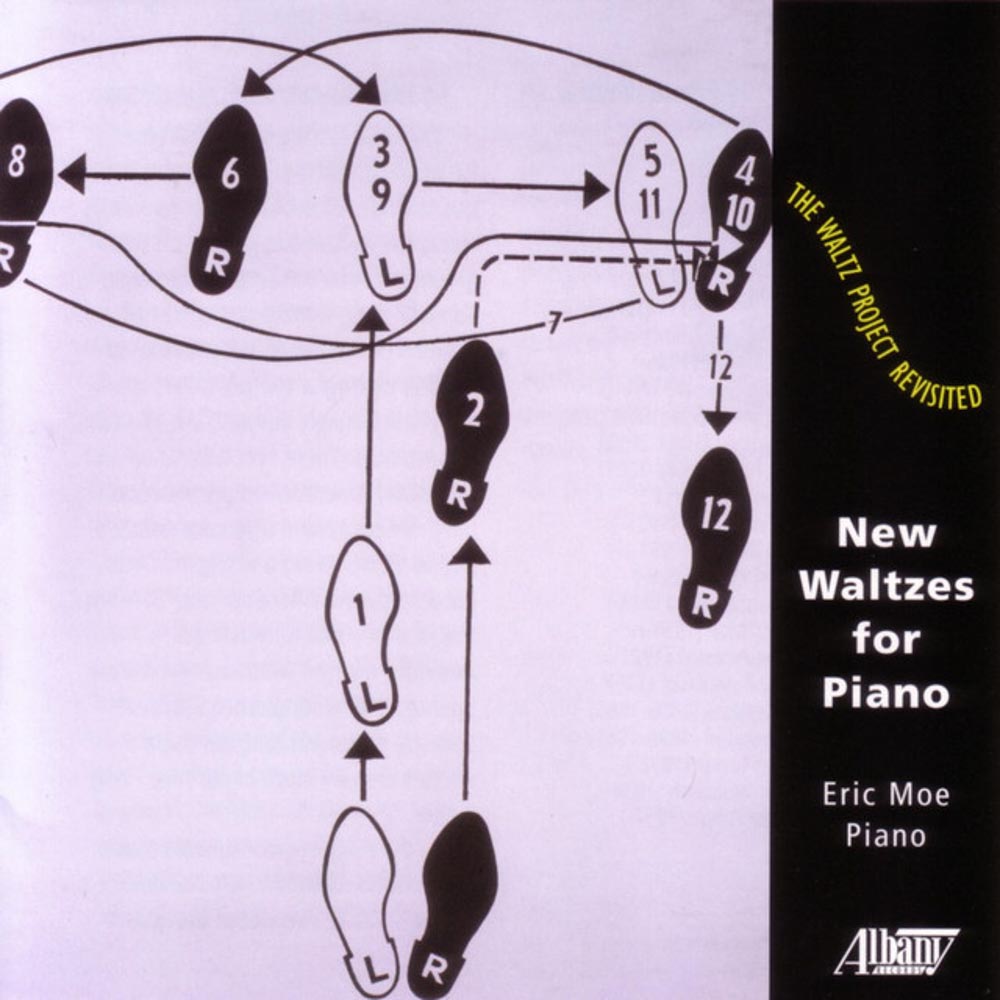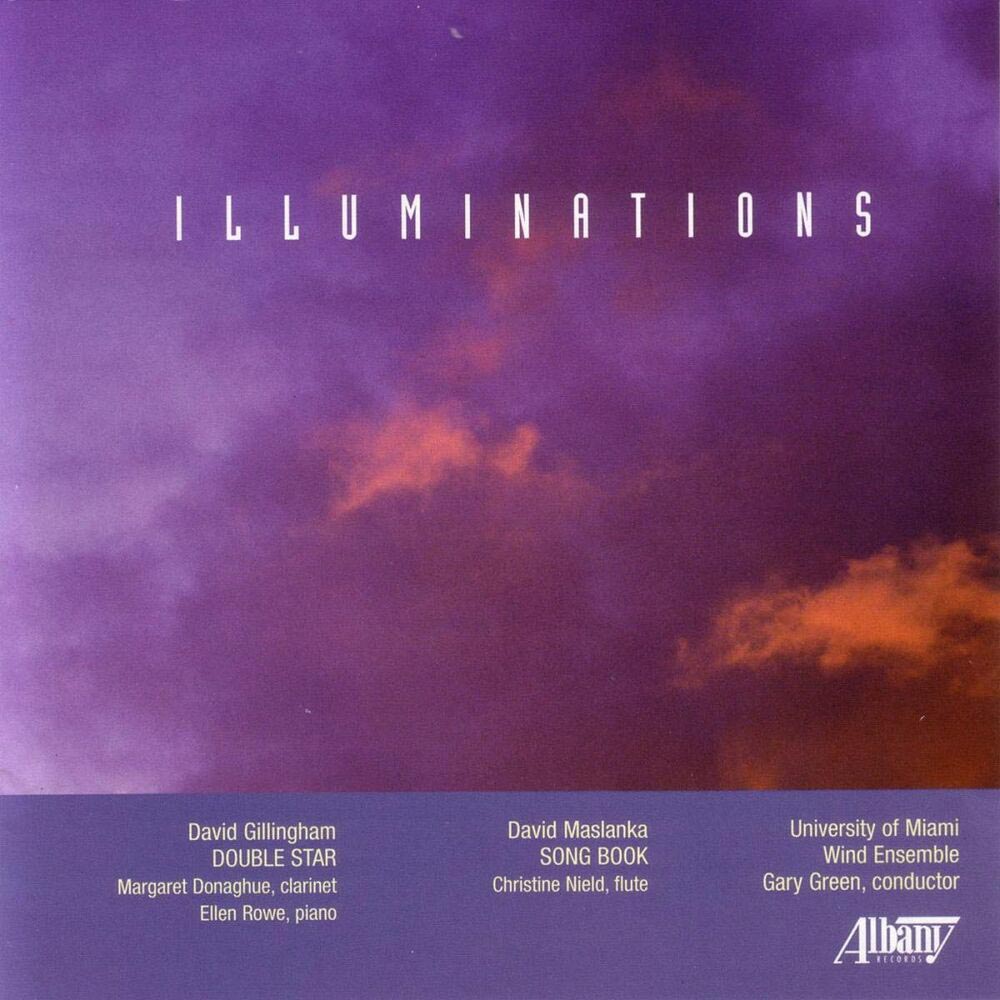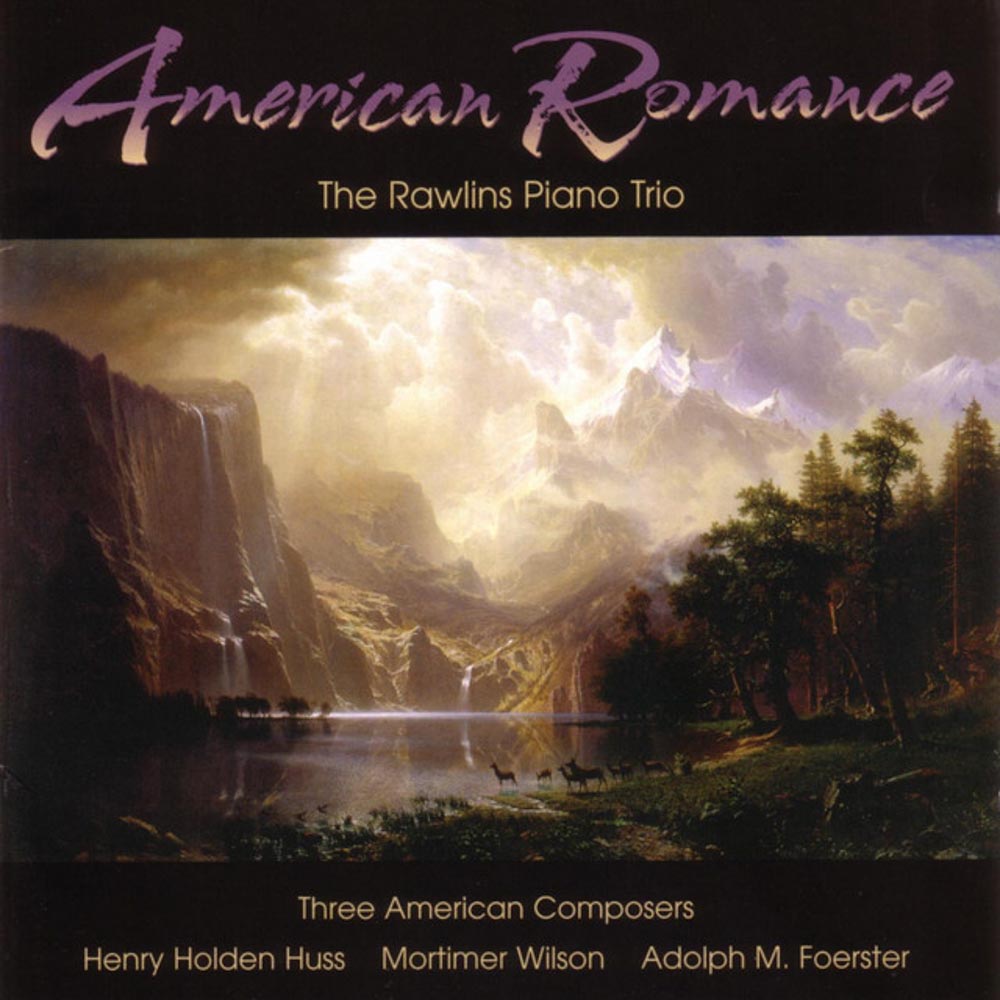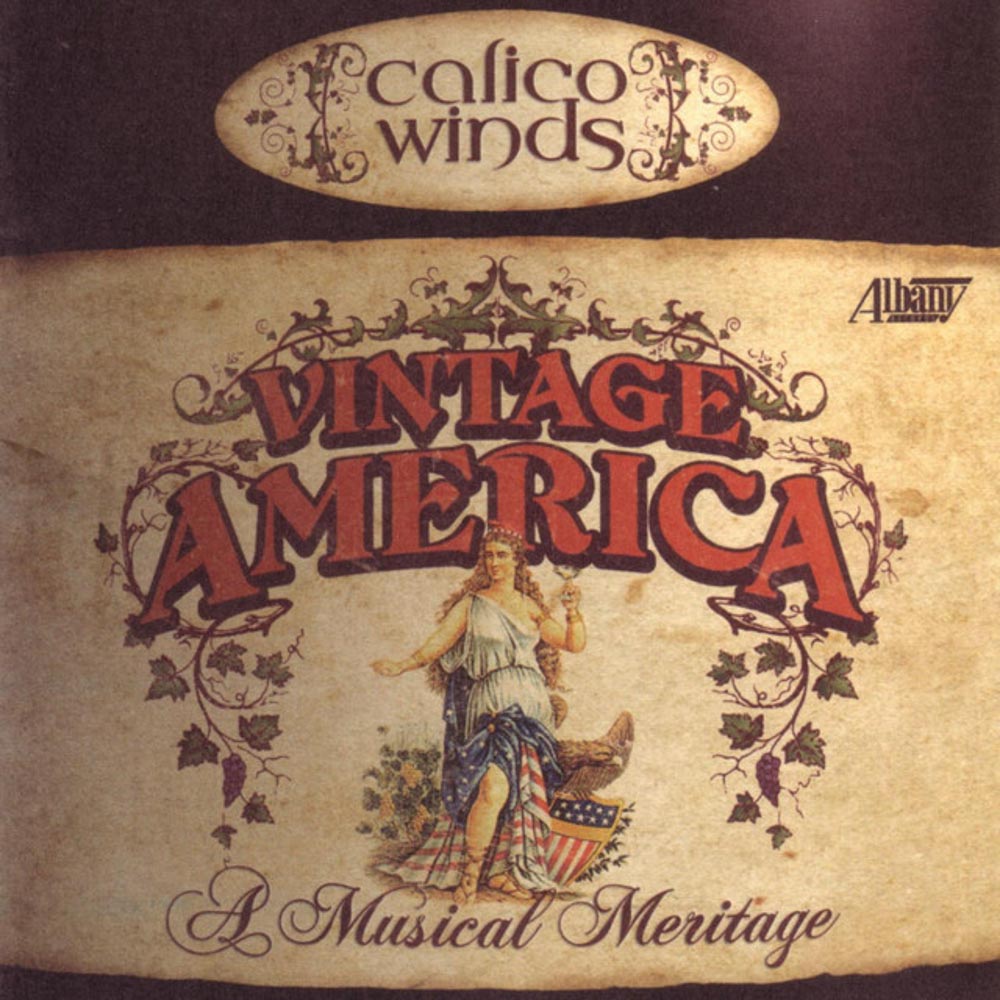Catalog #: TROY0662
Release Date: May 1, 2004OrchestralDon Ray was born, reared and educated in Southern California, where he took his B.A. at U.C.L.A. and his M.A. from California State University. He joined the CBS-TV Music Staff in 1956 and remained there as Music Supervisor until retirement in 1986. While there, he composed scores for G.E. Theater, Gunsmoke, Twilight Zone, CBS Movie-of-the-Week, and Hawaii Five-O, the latter bringing an Emmy nomination for best dramatic score. On leaving CBS, he turned to writing concert music. He has also been active in teaching film scoring techniques. His Piano Concerto is in four movements, employs the standard symphony orchestra and lasts about 40 minutes. It was begun in Dublin in 2000 and completed in Los Angeles in 2001. Family Portrait, Suite No. 2 contains a series of character studies and events in the family of the composer's grandparents who homesteaded a farm in the American Northwest around 1900. This suite is drawn from the original work which has thirteen movements.
Catalog #: TROY0663
Release Date: June 1, 2004ChamberRichard Felciano's interest in musical acoustics led him through language, voice and organ studies to electronic and then computer, as well as to music for architectural and public spaces and music for non-Western instruments. Many of these works demonstrate a strongly ritualistic bent, reflective of the large Portuguese and Asian populations of his Northern California childhood. In the words of his colleague and fellow composer, Howard Hersh, "the vitality of invention and depth of artistic curiosity are clearly enormous, (yet) the major thrust of his contribution...lies in the power with which he has fused his innovative techniques to that timeless element of dramatic immediacy and his acutely-tuned sensibility to the sheer beauty of sound. There has never been any doubt that behind his music - whatever its external form - there stands a human - a humane - sensibility". The composer himself writes: "It has been said that artists spend much of their lives following a path which they somehow know is right but cannot yet clearly define. Scientists know a similar situation: Einstein spoke of 'something which is there but we don't know what it is.' In both instances, knowing that 'something' becomes compelling. In the notes about the works which are on this CD, my own search for that 'something' will become clear - a desire to approach composition through a deepening knowledge of 'what is there' in music - the physical nature of sound itself, so that, as in architecture, whatever structure is possible is defined by the nature of the materials. Picasso observed that the real problem in creativity is the materials, meaning that only through knowledge of them can anything at all be expressed. He was right."
Catalog #: TROY0664
Release Date: May 1, 2004VocalCharles Wuorinen writes: "The Haroun Songbook is a collection of excerpts from my opera Haroun and the Sea of Stories (based on the novel by Salman Rushdie), rearranged for four singers and with a newly composed piano part. This latter is neither mere accompaniment nor a simple reduction of the original orchestral score, but rather a newly conceived virtuoso solo part. The selections are arranged so as to make the Songbook a complete independent piece, but for this recording we also include an outline of the plot of the underlying opera, which should help to place the individual pieces in the Songbook in their original context." The Haroun Songbook was commissioned by Works and Process at the Guggenheim and was premiered on October 13 and 14, 2002 at the Guggenheim Museum, performed by the same cast heard in this recording.
Catalog #: TROY0665
Release Date: November 1, 2004InstrumentalBorn in New York City, Jay Reise's choreographic tone-poem The Selfish Giant, based on a fairy tale by Oscar Wilde, was commissioned by the Philharmonia Orchestra and conducted by Djong Yu in London in 1997. His opera Rasputin, described in The Washington Times as "a spellbinding, challenging and profoundly beautiful creation," was commissioned and premiered by the New York City Opera in 1988. Memory Refrains (a string quartet in one movement) was premiered by the Cassatt Quartet in 2002. Open Night was the first work commissioned by the Kimmel Center Fresh Ink Contemporary Music Series in Philadelphia in 2003. Reise studied with George Crumb, jazzman Jimmy Giuffre, Hugh Hartwell, Carnatic rhythm with Adrian L'Armand, harmony with George Rochberg, and Richard Wernick. Deeply influenced by Carnatic (South Indian) music and jazz, Reise has developed his own rhythmic method which is a signature element of his music after 1990. Jay Reise is the Robert Weiss Professor of Music Composition at the University of Pennsylvania in Philadelphia and president of contemporary music ensemble Orchestra 2001. Marc-Andre Hamelin is universally regarded as one of today's masters of the keyboard. Critics and audiences alike have enthusiastically responded to his seemingly boundless technique, which embraces both stunning virtuosity and profound sensitivity. The New York Times dubbed him a "supervirtuoso," and the London Financial Times said, "Hamelin's wizardry defies the laws of nature." Mr. Hamelin's work in the recital hall and on the orchestral stage has taken him throughout the world. His prolific recording career has resulted in nearly 45 recordings and numerous industry awards and nominations.
Catalog #: TROY0666
Release Date: May 1, 2004OrchestralThe Massachusetts Wind Orchestra was founded in 1991 by Music Director, Malcolm W. Rowell, Jr., and has captured the attention and participation of some 140 outstanding musicians from throughout the East. This ensemble is now recognized as one of the finest professional ensembles of its kind in the United States. The Massachusetts Wind Orchestra provides quality musical experiences to wind, brass and percussion musicians. Its personnel are professional musicians , educators and freelancers who have trained at many of America's leading conservatories, colleges and universities. The ensemble offers a unique opportunity to experience and explore traditional and contemporary wind music while aspiring to the highest musical standards. It provides an avenue of professional growth for its membership, and its innovative programming honors the heritage of bands while advancing the medium into the 21st century through commissions, premieres and recordings. On September 21, 1997, at Tanglewood's Ozawa Hall, the Massachusetts Wind Orchestra presented the first wind band concert ever heard at Tanglewood.
Catalog #: TROY0667
Release Date: July 1, 2004ChamberMajor critics have praised Erica Muhl's music, describing it as "strong and poetic," "ravishingly beautiful," "haunting," even "fearless". Paul Hertelendy, one of America's most esteemed writers on music, wrote, "Muhl has a fine ear and an iridescent palette...[Her work] is a contemporary foray into impressionism, mysticism, veiled allure and the shimmering colors of a concert orchestra". She was born and raised in Los Angeles, where her father, Edward, was head of production for Universal Pictures and her mother, Barbara, an author and opera singer. Her parents associated with such musical figures as Stravinsky, Schnabel, Stokowski, Andre Previn and Henry Mancini. As may have been expected in this musical milieu, Muhl was trained both as a composer and conductor, with much of that training completed in Europe. At age sixteen she was invited to study with Nadia Boulanger in Paris. After returning to California to earn her B.M., she traveled again to Europe for graduate studies at the Accademia di Santa Cecilia in Rome and the Accademia Chigiana in Siena, studying with the great Italian composer Franco Donatoni. In 1991, she completed her Doctorate of Musical Arts at the University of Southern California. She studied conducting with Walter Cataldi-Tassoni, a student of Mascagni and Fritz Zweig, a student of Humperdinck and a close colleague of Richard Strauss and Otto Klemperer. Muhl has served as Assistant Conductor for Los Angeles Opera Theater, Seattle Opera and the Pacific Northwest Wagner Festival's complete Ring. Erica Muhl is Professor of Composition at the University of Southern California's Thornton School of Music and resides in Los Angeles.
Catalog #: TROY0668
Release Date: June 1, 2004InstrumentalMark Kroll writes: "Composers began writing new music for the harpsichord almost as soon as the instrument was rescued from extinction at the end of the 19th century. In fact, their contributions have played an important role in returning the harpsichord to its rightful place in the musical mainstream. The number of compositions has grown dramatically since those early days - and so has the quality. Each new work seems to exploit the unique sonorities of the instrument with ever increasing skill and sensitivity, and the contemporary repertoire now features excellent harpsichord music by almost every great composer of our time. American composers have been particularly enthusiastic advocates for the instrument. Six of them are represented on my first CD of contemporary American harpsichord music for Albany Records (TROY 457). This recording continues my exploration and support of this repertoire, and features some of the most exciting new contributions to the genre. All except the Hovhaness have been written in the last 25 years, and three belong to the first harpsichord pieces of the 21st century.
Catalog #: TROY0669
Release Date: July 1, 2004InstrumentalFrom the little that is recorded about Zipoli's life, we may understand that he pursued two paths during his lifetime: music and religion. At first it seems it was the religious road that led him to South America, but in fact, as well as wanting to take his vows in the order of the Jesuits, he was summoned to the New World because he was a musician as well as a missionary. As a child, he sang in the choir and was granted the support necessary to allow him to study in Florence. In 1709, he moved to Naples to study with Alessandro Scarlatti. His study with Scarlatti was short-lived and then went to Bologna and then Rome to study. In 1715, he was appointed organist of the Jesuit church in Rome. The following year his celebrated keyboard collection, Sonate d'Intavolatura, on which his fame rests, was published. Zipoli joined the Society of Jesus on July 1, 1716, and soon after went to Seville to await passage to the Paraguay province. With 53 other prospective Jesuit missionaries he sailed from Cadiz in April, 1717, but due to a violent storm, it was not until July that he and the others disembarked at Buenos Aires. From there they set out for Cordoba. By 1724, Zipoli had completed his theological studies and by 1725 was ready to receive priest's orders. Sadly, he died of tuberculosis before receiving them for lack of a bishop in Cordoba to ordain him that year. Zipoli was one of many excellent musicians recruited by the Jesuits between 1650 and 1750 for work in the Paraguay reductions. There is evidence that his music was in demand in South America. Jesuit documents of 1728, 1732 and later note his continuing reputation up to at least 1774. In the 1970s some 23 works by Zipoli (including copies of known keyboard pieces) were discovered among a large collection of manuscripts at the San Rafael and Santa Ana missions in eastern Bolivia. Sonate d'Intavolatura, Zipoli's work of 1716, consists of two bands of compositions for keyboard. The first band is devoted solely to the Organ. The second band is entitled "Sonate d'Intavolatura per Organo e Cimbalo." It is graceful and elegant music; its charm attracting republication in London and Paris in 1741. Band II of the complete keyboard works contains a series of four dance suites and two partitas. It is played here on the Cristofori piano from the Metropolitan Museum of Art's collection of Keyboard instruments.
Catalog #: TROY0670
Release Date: June 1, 2004InstrumentalChris Gekker is Professor of Trumpet at the University of Maryland. As a soloist he has been featured at Carnegie Hall, Lincoln Center, and throughout the United States, Asia, and Europe. For 18 years Chris was a member of the American Brass Quintet. He was principal trumpet of the Orchestra of St. Luke's and frequently performed and recorded as principal of the Orpheus Chamber Orchestra. He writes: "Eric Ewazen, David Snow, and I all entered the Eastman School of Music as freshmen in 1972, and in fact David and I were roommates that first year. We all became friends quickly, and I frequently prepared and performed their music during those student years. In the more than 30 years since then, rarely has a year gone by that I have not been involved in their works, and in some years there have been many performances. When I joined the American Brass Quintet in 1981, it was with great pleasure that I introduced pieces by David and Eric to the group, works that immediately became standards on the Quintet's recital programs and recordings. As far as our friendships have gone, well, some things do get better with age, and it is with a deep sense of gratitude that I look back upon all our years as colleagues. Both Eric and David write music that is important to me, music that I hear when I am away from my instrument, music that continues to challenge me to strive for improvement as a musician and trumpet player". David Snow holds degrees in music from Eastman and Yale University. He studied with Joseph Schwantner, Warren Benson, Samuel Adler, and Jacob Druckman. Eric Ewazen was born in 1954 in Cleveland, Ohio. He studied at Eastman and Juilliard. He has been Vice-President of the League-ISCM, Composer-in-Residence with the St. Luke's Chamber Ensemble. Lecturer for the New York Philharmonic's Musical Encounters Series, and he has been on the faculty of the Juilliard School since 1980.
Catalog #: TROY0671
Release Date: July 1, 2004InstrumentalWith Debussy's Jeux comes the notion of steps as a progression from one point to another in location, time and/or psychological state. As Debussy was a pianist-composer grappling with changing aesthetics in a time of turbulence, so Cuban-born American composer Jorge Martin is engaged in a similar pursuit today. His style is both accessible and provocative, equally using and breaking free of formal compositional technique, achieving its own unique voice. Martin and Jeanne Golan met as students at Yale University. Best known for his vocal works, Martin's first piano piece, Wand'ring Steps and Slow, was written for her. Its title comes from the last lines of Paradise Lost and suggests the loss of childlike innocence symbolized by the expulsion from Eden. Having written his first piano piece, Martin was inspired to delve into another. The Piano Fantasy on Sredni Vashtar also has a literary association. Saki wrote a tale of an orphan boy who defies a ferret he spies in his aunt's barn, to wonderfully horrific consequences. Martin turned this tale into an opera in 1992. He has reworked some of its music into the Piano Fantasy.
Catalog #: TROY0672
Release Date: June 1, 2004OrchestralNeal Gittleman writes: “The Dayton Philharmonic’s Wright Brothers Centennial Commissioning project dates back to 1997. At that point, more than five years before the actual 100th anniversary of Wilbur and Orville’s first successful powered flight, it was already clear that something big was called for. 2003 would also be the Ohio state bicentennial, the orchestra’s seventieth anniversary and the DPO’s first season in the new Benjamin and Marian Schuster Performing Arts Center. Given our commitment to the music of today, a major commissioning effort seemed the way to go, bringing to life four new medium-length pieces addressing the broad theme of the Wright Brothers. How do you do that? Easy. You find fearless composers like Bill Bolcom, Robert Xavier Rodríguez, Mike Schelle and Steve Winteregg and turn them loose. They attacked the challenge with the same vigor as Orville and Wilbur tackled the challenges of powered flight. Technical problems had to be solved. For the Wrights there were issues of wing and propeller design, inventing a control mechanism, finding a light but powerful motor and conquering the multidimensional challenges of lift, yaw and roll. For the composers, there were questions of genre, language, piece-d’occasion – or piece-for-the-ages and “How many percussionists can I have?” In the end, what made both endeavors successful was imagination and inventiveness – the imagination to envision the end result and the inventiveness to make it happen. More than anything else, this CD and the four works it contains reflect the spirit of Wilbur and Orville Wright, the greatest sons of Ohio’s great city of inventors”. Allison Janney, of The West Wing fame, was raised in Oakwood, a small suburb of Dayton. She attended Kenyon College in Ohio and landed a role in a play directed by alumnus Paul Newman. Newman’s wife, Joanne Woodward, encouraged Janney with her acting and suggested that she consider studying at New York’s Neighborhood Playhouse. She has won three Emmy awards for her work in television.
Catalog #: TROY0673
Release Date: July 1, 2004InstrumentalA regular on concert series throughout North America, Jonathan Keeble is quickly carving a niche as one of the leading performer/pedagogues of his generation. In addition to being a past winner of the Coleman Chamber Music Competition, and recipient of the Eastman School of Music Performer's Certificate, he is the recipient of numerous grants and awards. Mr. Keeble's passion for new music has led him to commission many new works for the flute from rising young composers. He is a popular performer at flute festivals around the world. He also routinely tours with Prairie Winds, a professional wind quintet. Mr. Keeble's teaching experience includes his present position as the flute professor at the University of Illinois at Urbana-Champaign, with posts held at Oklahoma State University, and as visiting professor at the State University of New York at Fredonia.
Catalog #: TROY0674
Release Date: October 1, 2004InstrumentalMartin Amlin studied with Nadia Boulanger at the Ecoles d'Art Americaines in Fontainebleau and the Ecole Normale de Muisique in Paris. He received masters and doctoral degrees as well as the Performer's Certificate from the Eastman School of Music, where he studied piano with Frank Glazer and composition with Joseph Schwantner, Samuel Adler and Warren Benson. Formerly an instructor at the Phillips Exeter Academy and an Affiliate Artist at the Massachusetts Institute of Technology, Martin Amlin is currently Associate Professor of Theory and Composition in the College of Fine Arts at Boston University. He has been rehearsal pianist for the Tanglewood Festival Chorus and the Boston Pops Orchestra on many occasions. This recording premieres Amlin's two most recent sonatas, a variation set, and five preludes, linking them with works of two composers, Aaron Copland and Irving Fine, with whom he shares formative influences. Though of different generations, all three came under the distinguished tutelage of Nadia Boulanger at the American Conservatory at Fontainebleau, and all three frequently drew inspiration from the creative atmosphere of Tanglewood, the legendary summer music center in the Berkshires. Thus, Amlin's voice, while uniquely personal, speaks within a tradition which demands uncompromising compositional integrity and stylistic conviction. A comparison of his music with that of his eminent forebears amply justifies the association.
Catalog #: TROY0675
Release Date: June 1, 2004InstrumentalBeth Wiemann was raised in Burlington, Vermont and studied composition and clarinet at Oberlin and Princeton University. She teaches composition and clarinet at the University of Maine, and splits her time between Maine and Massachusetts, where her husband, composer David Rakowski, teaches at Brandeis University. On this compilation of works for voice, clarinet, piano and electronics, Beth Wiemann brings together in compelling fashion three important facets of her life as a composer: a fascination with setting words, broad experience as an active performer of her own music and that of her colleagues, and an ongoing interest in the incorporation into her work of electronic and digital technology. Wiemann has been fascinated for years with the already heightened speech of poetry and its translation into the still more heightened speech of song. Among her earliest musical memories is that of hearing original cast recordings of Broadway musicals played in her home as a child. Unlike a number of composers of her generation, the Broadway idiom has exerted a far greater influence on her than later pop and rock styles, though not in an immediately obvious way. While genuinely admiring the craftsmanship of such composers for the stage as Gershwin, Kern, Porter, Rodgers, Bernstein and Sondheim, however, she has not sought to introduce superficial characteristics of their styles into her music in any literal sense. Instead, she has cultivated a harmonically subtle, more chromatic and less obviously tonally grounded pitch language. Her clearest connection with mid-twentieth century American musical theater is in her treatment of the declamation of the text. Consequently, from the songs recorded here to her recent opera, Deeds, her vocal compositions, like the best American popular songs, reflect a penchant for capturing the rhythms and nuances of vernacular speech. In keeping with that tendency, she is often drawn to poetry that is intimate and conversational in tone or concerned with aspects of everyday life. In travels to artists' colonies over the years she has had the good fortune to meet and befriend a number of poets, who often provide her with new material for musical setting. Most of this disc consists of selections from Weimann's collection Simple Songs, a project she began in 1990. Included are the first songs of the set, "No Moon, No Star" and "Night Thought." At the time of their composition, she was also engaged in setting them for women's chorus. She was prompted to make solo settings partly in response to a request from the soprano Karol Bennett for some songs to perform on a concert planned for the fall of 1990. Over time, Wiemann added other songs to the collection as she came across poetry that interested her. The latest song from the collection that appears on this disc is "Seamstress" composed in 2001.
Catalog #: TROY0676
Release Date: June 1, 2004ChoralYou might still hear Yiddish songs today, in concert or at social gatherings of Yiddish speakers. But their natural venue was the village or shtetl of Eastern Europe or America where you could hear them through open windows in courtyards, or from busy people humming their way from place to place. They were born and flourished in a world that is no more. They represent the joys and sorrows, dreams and aspirations of ordinary folk, the Jewish mother's dreams for her child, the poverty of the rebbe, the Jewish teacher, the freshness of young love and revolution, the joy of Jewish holidays which provided a welcome respite from the drudgery and hardships of daily life for Eastern European Jewery. Yiddish song reflects the richness of Jewish folklore, as old, vast and varied as the numerous regions which the thousand-year-old language and culture inhabited. It reached its greatest artistic expression in the latter half of the 19th century and the first half of the 20th. There are songs of work, love and lullabies; songs about great Jewish heroes and parodies about the same, songs about Hassidic rabbis, pogroms, the Messiah, the longing for redemption and the return to Zion, and of revolution. Political parodies abounded in the 20th century as did Yiddish theater songs in various genres: operetta, art song and Vaudeville. There were writers, poets and musicians throughout the ages who created this treasure trove, much of it still waiting to be culled. The Yiddish street singer was a common sight in the cities and towns of Eastern Europe, well into the 20th century. The broder zinger from Galicia heralded in an age of Yiddish folksong creativity that reached every continent on which Jews lived in the 19th and 20th centuries. The poet Itzik Manger and, of course, Mordechai Gibertig, the most famous and popular of the Yiddish folk-poets, were heirs of that tradition. Gibertig "S'Brent," a vision of burning cities and a call to arms, written in 1938, proved to be all too prophetic. During World War II, hundreds of thousands of Jews were confined in ghettos across German occupied Eastern Europe. In the ghettos and even concentration camps, members of the terrorized Jewish population engaged in remarkable, organized acts of defiance. Determined to leave a record of their history for posterity, they secretly created archives, diaries, drawings, photographs and songs to document Nazi crimes against their communities. During the same period many European Jews defied their Nazi oppressors by actively taking part in an underground war of resistance. This partisan warfare, carried out by clandestine, irregular forces operating inside enemy territory, was particularly widespread in the dense forests and nearly impassable marshlands of Eastern Europe. In 1942, the Supreme Partisan Headquarters in the Soviet Union extended its authority over the majority of partisan units in Eastern Europe and young Jewish fighters who escaped the ghettos joined the Russian partisans. Jewish partisan units were established in 1943, and the Yiddish language was now used for military communication, as well as for cultural and folkloric expression, such as poetry and song. This is a delightful album, full of energy and wit. The singing is magnificent and infectious. The CD booklet contains full texts of each song in English.
Catalog #: TROY0677
Release Date: September 1, 2004InstrumentalOn this CD are gathered shorter and occasional pieces and one extended work by California-born composer David Macbride. The pieces were written in a period spanning a little over a decade, and are played by him here with a nuanced artistry and great authority. It is a delightful and ultimately very moving recording, as it reveals a composer in mid-career who is able to do that very hardest of things, which is to allow the listener into his world without posing or imposing. In a period when "new music" often seems to need some kind of verbal explanation, Macbride's work, even at its most complex, holds true to music's purpose, which is to communicate directly to the listener with sounds. So natural and sure is his composer's art that any accompanying notes seem almost unnecessary. Nevertheless, it is a pleasure to recommend music that is at once so touching and so beautifully made. Macbride's roots in California and in Beijing, China, the birthplace of his mother, influence the tone of his music, which, even at its most dense, generates an extraordinary attentiveness and calmness in the hearer. His language seems an effortless coalescence of Eastern and Western elements, remnants of neo-classicism, figurations and harmonies from mid-century jazz, and, at times, echoes of Satie, Messiaen and of an attractive early work of fellow Californian John Cage. Different degree of influence from these sides emerge in different works, but one is struck in the end by the music's remarkably unified voice and sense of purpose. Transparent, lucid, firmly in the present, yet also deeply meditative, the overriding impulse behind Macbride's expression feels quietly, unpretentiously religious.
Catalog #: TROY0678
Release Date: August 1, 2004VocalHoward Stokar writes: "Religion, specifically the Judeo-Christian continuum, is integral to Charles Wuorinen's view of the world and his own work as a composer. The Latin Mass for the Restoration of St. Luke in the Fields was written to celebrate the rededication of a church in lower Manhattan which had burned to the ground on the night of March 6, 1981, and was subsequently rebuilt. The work is divided into seven sections: the first and last are purely instrumental, the central five compose the Kyrie, Gloria, Sanctus/Benedictus, Angus Dei and a Communion motet. The motet is a setting of words from St. John which are inscribed on the rood screen of the original church. The Mass is a central work in Wuorinen's catalog. It is actually a Missa Brevis as it does not include the Credo. The reason for this is practical: St. Luke's requires congregational singing of the Credo. The mass was performed for the first time on November 20, 1983 at St. Ignatius of Antioch, New York City. A Solis Ortu and the reworking of the Josquin motet Ave Christe for piano were composed for Stephen Fisher, then President of C.F. Peters Corporation. Fisher, a fine amateur photographer, had given Wuorinen a photo of the sun rising over Yosemite National Park. In response, Wuorinen wrote the lovely short a cappella antiphon, A Solis Ortu, which is based on a related chant in the Liber usualis "From the rising of the sun to the going down of the same, the name of the Lord is to be praised". The first performance took place as part of the Solemn Mass at St. Ignatius of Antioch Episcopal Church conducted by Harold Chaney on December 30, 1990. Ave Christie is a re-casting of a portion of a motet by Renaissance master Josquin des Prez. Unlike Busoni, whose transformations of Bach chorales into late 19th century virtuoso showpieces are designed to display the talents of the performer, Wuorinen presents the Josquin simply, with elegant octave doubling, and registeral changes. He transforms the motet into a choral-like work for piano". About the main work on this disc, Genesis, Michael Steinberg writes: "Herbert Blomstedt, Music Director (1985-1995) of the San Francisco Symphony, was not just the first conductor of Genesis; he was in an important sense, the inspiration and godfather of this powerful work. In one of his conversations with Charles Wuorinen during the four years, 1985 to 1989, that he, Wuorinen, was the San Francisco Symphony's composer-in-residence, Blomstedt said 'Wouldn't it be nice if someone wrote a new Genesis' or words to that effect. Moreover, having conducted several of Wuorinen's instrumental works - Movers and Shakers, The Golden Dance, Another Happy Birthday, the Piano Concerto No. 3, and Machault Mon Chou - Blomstedt was curious to see what effect the challenge of writing a new work for chorus might have on the composer's musical language. From these exchanges came the impetus for Wuorinen to add his Genesis to the list - not large, but distinguished - of compositions on that subject by Haydn, Schoenberg and Milhaud."
Catalog #: TROY0679
Release Date: July 1, 2004ChoralMargaret Garwood, like many earlier composers, is essentially self-taught. She passed the requirements for a Bachelor's degree in music by examination, and now holds a graduate degree in composition. She is greatly indebted to composers Julia Smith, Louise Talma, and especially Miriam Gideon for their support. While she has written several instrumental chamber works, the majority of her output is for voices, and includes four operas, numerous song cycles, and works for combined chorus and orchestra. Her operas have received fully staged productions in New York, Philadelphia and on the West Coast. They include The Trojan Women, The Nightingale and the Rose, Rappaccini's Daughter, and an opera for children entitled Joringel and the Songflower. She has written the librettos to all her own operas, with the exception of the first one. She is presently working on an opera based on Hawthorne's The Scarlet Letter.
Catalog #: TROY0680
Release Date: September 1, 2004ChamberWolfgang David (b.1971) has become ensconced on the international stage, both as a recitalist, and as a guest soloist with many of the world's leading orchestras. His teachers included Rainer Kuelchl, the concert master of the Vienna Philharmonic Orchestra, Igor Ozim at the Berne Conservatory and Yfrah Neaman at London's Guildhall School of Music. David Gompper (b.1954) has lived and worked professionally as a pianist, a conductor, and a composer in New York, San Diego, London, Nigeria, Michigan and Texas. He is currently Professor of Composition and Director of the Center for New Music at the University of Iowa. In 2002-2003, he was in Russia as a Fulbright Scholar, teaching, performing and conducting at the Moscow Conservatory. He has performed with Wolfgang David in Moscow, the United States and Vienna.
Catalog #: TROY0681
Release Date: August 1, 2004ChamberDavid Rakowski grew up in St. Albans, Vermont playing trombone in community bands and keyboards in a rock band. His first composition was a band piece he wrote his junior year in high school, in order to win the Vermont All-State Composition Competition (he lost). The first music he heard that he really liked was Le Soleil des Eaux of Boulez and Ensembles for Synthesizer of Babbitt, on a Time-Life "Music of Today" compilation that his band director had lent him. He eventually studied composition at the New England Conservatory, at Princeton with among others, Milton Babbitt, and at Tanglewood with Luciano Berio. He has been composer-in-residence at the Bowdoin Summer Music Festival and Guest Composer at the Wellesley Composers Conference. He has taught at Stanford, Harvard, and Columbia Universities. Currently he is Professor of Composition at Brandeis, whose faculty he joined in 1995.
Catalog #: TROY0682
Release Date: September 1, 2004ChoralJohn Schlenck was born in Indianapolis. At age 21, he graduated from the Eastman School of Music with a major in composition and moved to New York City. There, he soon discovered his affinity with Indian thought and joined the Vedanta Society of New York. Serving as its music director since 1961, Schlenck has composed many songs and a number of larger works with Vedantic and other spiritual texts. His instrumental works include three symphonies, a piano concerto, and numerous chamber and solo compositions. After traveling the length and breadth of India for three years as a mendicant friar, Swami Vivekananda arrived at Kanyakumari, the southernmost tip of the country, in late December, 1892. This place of pilgrimage contains a temple to Goddess Kanyakumari, an aspect of the Universal Mother. About a quarter mile from shore, twin rocks jut out from the sea. After worshipping at Mother's temple, Vivekananda swam through the turbulent, shark-infested waters to the farther of the two rocks. He remained there for three days and nights on the solitary rock, meditating intensely on the condition of India - her present degradation, the misery of her people, her past glory and future potentialities. The composer writes: "in the winter of 1981-82, I spent three months in India, visiting many of the places where Vivekananda had stayed, meditated and taught. A high point was my visit to Kanyakumari. I was profoundly moved by the drama and pathos of Vivekananda's tour through India, by his compassion for the suffering people and by the nobility of his vision." It was from the recollections of this trip that the music on this CD was composed.
Catalog #: TROY0683
Release Date: August 1, 2004ChamberAllen Shawn has composed a large catalog of chamber and piano music, 11 concertos and orchestral works, choral music, and several song cycles. He has composed incidental music for theater, two chamber operas to libretti by his brother, playwright Wallace Shawn, a one act children's chamber opera, music for ballet, and music for the film "My Dinner with Andre." He performs frequently as a pianist and has been a faculty member since 1985 at Bennington College in Bennington, Vermont. He is also the author of the book, Arnold Schoenberg's Journey, as well as many articles about contemporary music.
Catalog #: TROY0684
Release Date: September 1, 2004ChamberPeter G. Davis writes: "Spanning the years 1978 to 2001, the music on this disc gives a useful overview of the musical aims and stylistic development of a prominent, productive, and often provocative American composer between the ages of 17 and 40. It is a useful mini-survey and a revealing one as well. All five works are written for small instrumental combinations, an exposed medium in which no composer has ever found an easy place to hide. In chamber music every note counts, and the composer must make the performer as well as the listener feel actively engaged with the music's substance and forward progress at all times, if the piece is to emerge as a fully satisfying listening experience. Anyone who listens closely to Lowell Liebermann's scores has to be impressed by their ability to do precisely this in music notable for its clarity and textural lucidity. Some will be tempted to call these works neo-romantic, neo-classical, post-modern, or any number of other fashionable terms, most of them not very helpful. Labels are often misleading, but one thing is certain; Liebermann is not concerned with startling his audiences by experimenting with radical new structures, never-before-heard musical sounds, or extended instrumental techniques. Indeed, he adopts a more conservative stance that apparently stings certain critics for whom novelty is absolutely essential if a new work is to be considered artistically valid. So much the worse for them. Liebermann is too busy composing to enter into such aesthetic arguments. The title of each piece on this disc honestly describes what it is, and in terms that composers as far back as Haydn and Mozart would recognize. Liebermann's music falls gratefully upon the ear, but it is filtered through the sensibility of a composer who clearly lives in our time and is fully aware of the tumultuous musical upheavals of the past century, even as he consciously makes the choice to offer us something that rises above the fray. Liebermann writes music that above all strives for balance and beauty - and braininess as well, for all those who care to dig beneath the surface. It is a healthy sign of the times that a composer can once again choose to be accessible in this way and not be automatically squashed and discouraged by the mandarins of contemporary music. Such was the fate of many American composers active in the generation that preceded Liebermann, and the new music scene is still in recovery from those bad old days."
Catalog #: TROY0685
Release Date: August 1, 2004InstrumentalPianist Sara Laimon is an active performer in both solo and chamber music. She has performed in Canada, the United States, England, France, Japan, Mexico and Poland, and she has represented the U.S. Information Agency as an Artistic Ambassador in India and Nepal. Laimon is a founding member and co-artistic director of the acclaimed New York-based group Sequitur and has been guest artist with numerous other ensembles. As a sought-after performer of new music, she has worked with composers such as Ligeti, Berio, Bresnick and Kirchner, as well as performing and recording music of many emerging American composers. The New York Times described her 2001 live performance of this disc's repertoire as "a sense of knowing exactly where she wanted to go: music-making as intelligent as it was technically proficient". Born in Vancouver, Laimon is a graduate of the Vancouver Academy of Music, the University of British Columbia, Yale School of Music and SUNY Stony Brook, where she received a DMA under Gilbert Kalish. She was a member of the piano faculty at the Yale School of Music and the University of Manitoba in Winnipeg before joining the McGill Faculty of Music in 2001, where she is currently chair of the Piano Area.
Catalog #: TROY0686
Release Date: October 1, 2004OrchestralChristopher Gunning was born in Cheltenham, Gloucestershire, but spent his childhood in London. He studied composition, piano and percussion at the Guildhall School of Music and Drama, where his teachers included Edmund Rubbra and Richard Rodney Bennett. For most of his professional life he has composed film and television scores. He currently divides his time between composing for films and television, conducting engagements, and composing his own concert works, the most recent of which was a Saxophone Concerto for John Harle. The composer writes: "I had wanted to write a piano concerto for several years before finally getting to grips with it in 2001. So much contemporary piano music seems to ignore that which I like best - the instrument's ability to sing - and I was interested in doing something which explores the lyrical as well as the percussive qualities of the piano. Storm composed early in 2003 has slow outer sections; apart from those it is pretty noisy and dramatic. It is scored for a large symphony orchestra, and I wrote it shortly after spending some time at the seaside and feeling totally exhilarated by the wind and waves of a violent storm. Symphony No. 1, composed in 2002, continues a process begun a few years previously with my Saxophone Concerto, which was my first concert piece following many years of working in films and TV. It was then that I discovered a penchant for single movement forms which move through many changing emotional moods; I think of them as novels or journeys."
Catalog #: TROY0687
Release Date: September 1, 2004OrchestralAndrew List composes music in many different genres including orchestral works, string quartet, vocal, choral music and opera, music for children, solo works and a variety of chamber ensembles. A resident of Boston, Massachusetts, Mr. List is a Professor of Composition and Theory at the Berklee College of Music. Born in St. Louis, Missouri, List is a graduate of the New England Conservatory of Music. He received his doctorate in music composition from Boston University where he studied with Bernard Rands and Nicholas Maw. Lee. T. McQuillan, a resident of Middletown, Connecticut, studied Music Education at Barrington College in Rhode Island and later received his Bachelor of Music in composition from the Hartt School of Music. Arthur Welwood is a Professor of Composition at the Berklee College of Music. Wind Sky Clouds, commissioned by jazz trumpeter Greg Hopkins, was completed in the summer of 2003. The premiere performance took place in Hartford, Connecticut on November 16, 2003, with Hopkins playing the solo trumpet and flugelhorn and Tibor Puszati conducting the Connecticut Valley Chamber Orchestra. The piece is an example of "Third Stream," a phrase first coined by composer Gunther Schuller to describe the fusion of jazz and classical styles and where the crossover from one to another in the course of the piece is blurred and often imperceptible.
Catalog #: TROY0688
Release Date: November 1, 2004ChamberHarold Farberman's career as a conductor has overshadowed his achievements as a composer. In fact, while a member of the Boston Symphony Orchestra, Farberman turned first to composition as a further creative outlet, which in turn led to his more visible conducting career. From the mid-fifties onward, when he composed his first work, Evolution, for soprano, French horn and seven percussionists, Farberman has never stopped creating music. Harold Farberman was born on November 2, 1929 on New York City's Lower East Side. Coming from a family of musicians (his father was the drummer in a famous 1920s Klezmer band led by Schleomke Beckerman; his brother was also a drummer) it seemed inevitable that he pursue music as a career. After graduating from the Juilliard School of Music on a full scholarship in 1951, he immediately joined the Boston Symphony Orchestra percussion section and became the youngest member of the orchestra at that time. Incidentally, Farberman has the distinction of being the only Juilliard instrumental graduate who has been invited back as a conductor of its various orchestras and as a composer - he was commissioned to write an opera for the opening of The Juilliard Opera Theater (The Losers). With a performer's knowledge of percussion instruments and a dissatisfaction with their conventional treatment, Farberman became an early advocate for the use of percussion sonorities as a major voice in compositional structures. His very first work, Evolution, written in 1954, before he began formal studies in composition, is scored for over one hundred percussion instruments and has been recorded four times, once by Leopold Stokowski. After hearing Evolution, Aaron Copland invited Farberman to study with him at Tanglewood in 1955. That short involvement with Copland strengthened Farberman's resolve to acquire more compositional skills, and during his twelve year tenure with the BSO, he earned a Masters Degree in composition from the New England Conservatory.
Catalog #: TROY0689
Release Date: November 1, 2004InstrumentalEric Moe writes: "The waltz traffics in weightlessness. By adding an extra step to the one-two/left-right of pedestrian movement, it forces the waltzer and listener off the ground and into the air (left-right-UP). Some of these waltzes tackle gravity head on (Roger Zahab's Levitation of pianos during a waltz), others are more insinuatingly buoyant, but all share this attribute. These new waltzes are not exclusively American - there are contributions from Poland (Zygmunt Krauze's Music Box Waltz) and Nigeria (Akin Euba's Study in African Jazz 3) - but they are indebted to vernacular American rhythms which add even more bounce. Their distinguished European ancestry is recognizable, but these waltzes are very much of our time - only lighter. I have revisited Robert Helps' and Robert Moran's Waltz Project of the mid-1970s - half of the 22 waltzes on this CD are from the collection published by C.F. Peters. They include works that have become standards of the repertoire, such as Milton Babbitt's Minute Waltz and Philip Glass' Modern Love Waltz, as well as other gems. The remaining 11 waltzes are new, ten composed especially for this recording, with Ricky Ian Gordon's Waltz a happy discovery. The variety is enormous. Some have a direct connection with jazz: Anthony Cornicello's PostModern Waltz deconstructs a famous McCoy Tyner solo; my own Pulaski Skyway Waltz begins with a quotation from Mal Waldron's Firewaltz, Akin Euba's "African Jazz" study draws from the musical wells of Africa and Vienna, while Andrew Imbrie infuses a one-to-the-bar waltz with the headlong energy of bebop. Lee Hyla's One Moe Time has an improvisational feel, eventually cutting loose ecstatically before returning to its senses. Other waltzes comment trenchantly on the genre itself, like Ron Caltabiano's Character Sketch: About a Waltz. Virgil Thomson's birthday card to Mrs. Efram Zimbalist subverts the waltz rhythm with a thumping duple cross-rhythm in the process of quoting "Happy Birthday." Charles Wuorinen's Self-Similar Waltz operates on a deeper level of wit, reflecting its muscular self in myriad ways; the listening experience is like walking through a set of fun-house mirrors."
Catalog #: TROY0690
Release Date: September 1, 2004OrchestralDavid Gillingham earned degrees from the University of Wisconsin-Oshkosh and Michigan State University. He has an international reputation for the works he has written for band and percussion. Many of his works are now considered standards in the repertoire. He is currently a Professor of Music at Central Michigan University. Double Star for Solo Clarinet, Solo Piano and Wind Ensemble was commissioned by Gary Green and the University of Miami Wind Ensemble to celebrate the friendship between the composer and the two soloists. The work, therefore, celebrates humanity, especially the goodness and friendship one achieves through music. David Maslanka’s Song Book is a set of pieces that are songlike – that is, intimate and expressive, though not necessarily quiet. “The solo flute feels like a voice to me,” writes the composer. “One which has a complex story to tell, in the form of musical dreams. I have used three chorale melodies in Song Book.” David Maslanka was born in New Bedford, Massachusetts. He attended the Oberlin College Conservatory where he studied composition with Joseph Wood. He spent a year at the Mozarteum in Salzburg and did graduate work in composition at Michigan State University with H. Owen Reed. He has served on the faculties of the State University of New York at Geneseo, Sarah Lawrence College, New York University and Kingsborough College of the City University of New York. He now lives in Missoula, Montana.
Catalog #: TROY0691
Release Date: October 1, 2004VocalArthur Honegger, of Swiss parentage, was born in Le Havre, France. At a young age his father sent him to study at the Zurich Conservatory, and at age 21, he moved to Paris where he was accepted into the Paris Conservatory. After the war, he gained wider notoriety for a period of time by his association with Les Six. Honegger was the only one of Les Six who did not wholly support Satie and all of the ideals the group adopted. While he also rejected the over-exaggerated expressions and the absence of form in the compositions of the late Romanticists, Honegger had little sympathy for the rather whimsical and trivial simplicity of the music of some of the members of Les Six. He wrote more than 40 melodies for voice and piano, which appear as 21 groups of songs, containing a total of 56 individual songs that reflect various levels of sophistication. As a body of work, the songs by Honegger demonstrate a broad range of imagination and expression. Jacques Leguerney, born 18 years later than Honegger, also in LeHarve, France, became fascinated with music and its composition after beginning piano lessons and attending concerts while yet a child. However, as the son of a prominent lawyer raised in a typical upper middle class setting, he was expected to undergo the usual classical education and prepare for a profession such as law even though he continued with formal piano lessons. However, the young Leguerney's interest in music composition was not to be denied. In 1925, after he had begun law studies, he dropped out to take private harmony and counterpoint. At the age of 20, he began study with Nadia Boulanger. This lasted only a year because he resisted her teaching methods as unsuited to his personal goals for composition. He was encouraged by Albert Roussel to continue to compose in his own style. Leguerney's love of French Renaissance poets inspired him to set their poems to music. He was neither a trained singer, nor an accomplished pianist and, despite a minimum of formal musical training, his native talent enabled him to work out the melodies and the precise pianistic sounds that would express the nuances of the poem. The three groups of songs that are included in this album are from Leguerney's collection of his settings of French Renaissance poems that he named Vingt Poemes de la Pleiade. The title was chosen in accordance with the name Pleidade (the seven stars in the Taurus constellation) used by literary historians for the group of seven poets of the 17th century who called for the purification of the French language. Graham Johnson, a noted British pianist/accompanist, writing in a French Song Companion made this observation: "There is so much character and vitality in this music that its neglect is difficult to explain...This music is too good to remain a rarity. It would certainly repay the championing of a new generation of interpreters, and Leguerney's name deserves to be seen on concert programs as a matter of course."
Catalog #: TROY0692
Release Date: August 1, 2004ChamberHenry Holden Huss was born in Newark, New Jersey, and grew up in New York City, where his family moved when he was two. His father had emigrated from Germany and became a successful organist and piano teacher in this country. Young Huss began to study music with his father, then others in this country, finally traveling to Munich to study at the Royal Conservatory. He studied piano, organ and composition with two other American students who began the same time he did: Horatio Parker and Arthur Whiting. All three excelled. Upon his return to the United States, Huss received some recognition with his Piano Concerto (his graduation piece from Munich). He performed it both with the Boston Symphony and the New York Philharmonic. Daniel Gregory Mason related to Huss in 1892, that John Knowles Paine, the dean of American composers with whom Mason was studying at the time, considered Huss "the best of the young generation of American composers". Many shared this opinion. But like many other American composers of the time, Huss found it very difficult to get his music performed and published. His Trio in d minor, Op. 23, was composed in 1886 and dedicated to his teacher Joseph Rheinberger. Mortimer Wilson was born in Charlton, Iowa. He studied organ, violin and composition with Frederick Grant Gleason at the Chicago Musical College. He then studied in Leipzig with Max Reger. John Tasker Howard (the great observer of early American composers) wrote of his rigorously trained former teacher that he "...could toss complicated counterpoint from his pen as easily as he could talk to his friends". Upon his return to this country in 1911, he taught at the Atlanta Conservatory and conducted the Atlanta Philharmonic Orchestra. In 1916, he moved to Brenau College in Gainesville, Georgia. By 1918, he had taken a job as consulting editor for the National Academy of Music in New York City, where he remained until his death. Today, his works are mostly in manuscript and includes five symphonies and a great deal of chamber music. The suite, From My Youth, Op. 5 was published in 1911 and premiered by the Sitting Trio. Adolf Martin Foerster was born in Pittsburgh. He began with piano lessons from his mother and then pursued music in the public schools which had just incorporated Lowell Mason's ideas about music education into its public schools. He also then went to Leipzig to complete his education. Upon his return to America he spent one year teaching in Ft. Wayne, Indiana, before he returned to Pittsburgh, where he soon became one of the musical leaders of the community. Though mainly known as a songwriter, Foerster's many compositions include numerous suites, overtures, and festival marches for orchestra; a violin concerto, two other piano trios; a piano quartet and pieces for violin and piano. His Trio Serenade was composed in 1907 and is a lush romantic work.
Catalog #: TROY0693
Release Date: August 1, 2004ChamberAmerica began forging its own cultural identity in the 19th Century with music reflecting a vast array of cultures coming together. By the time the first music conservatory opened in 1865, European classical music had begun to be mingled with music influenced by Native American themes, African-American styles of ragtime and spirituals, Latin American and rural American folk music, and the traditional military band. With Vintage America, Calico Winds showcases these American musical roots. Known for exploring the full palette of tone colors available to the wind quintet, Calico Winds plays "in perfect balance with each other, each [member] contributing lovely tone quality and flawless intonation..." (The Times Herald, Olean, NY) It is with these attributes that Calico Winds brings to life America's rich musical legacy.
Catalog

©2024 Albany Records. All rights reserved. | Privacy Policy | Website by PARMA Creative.


